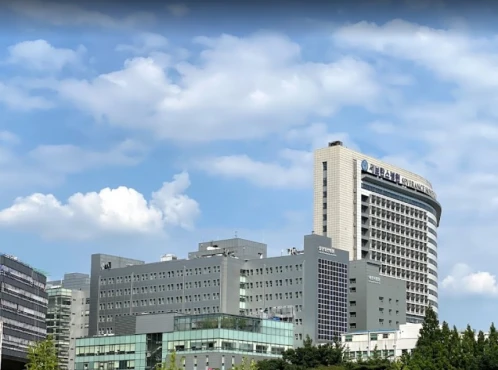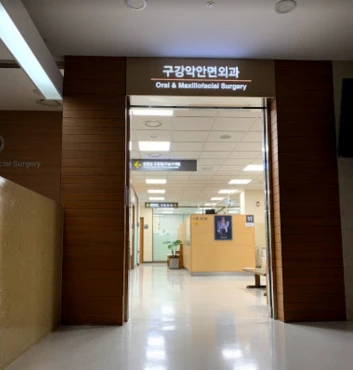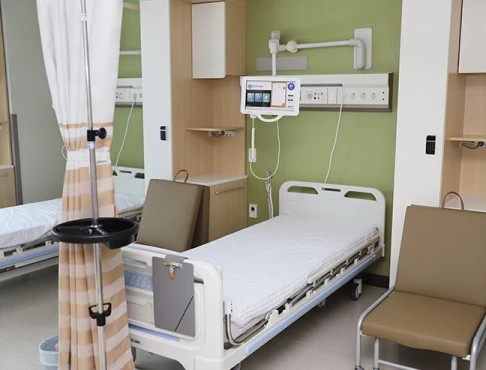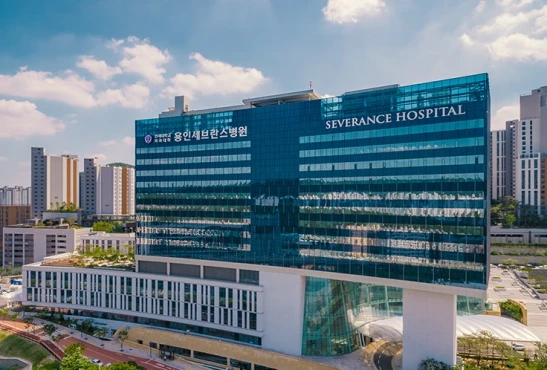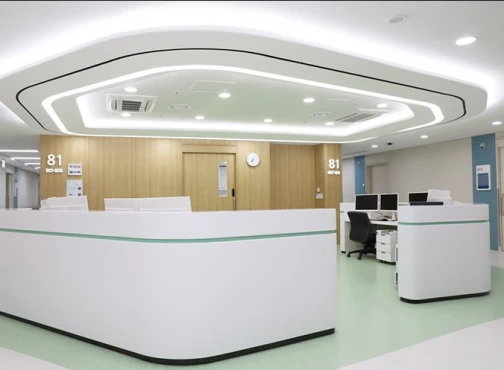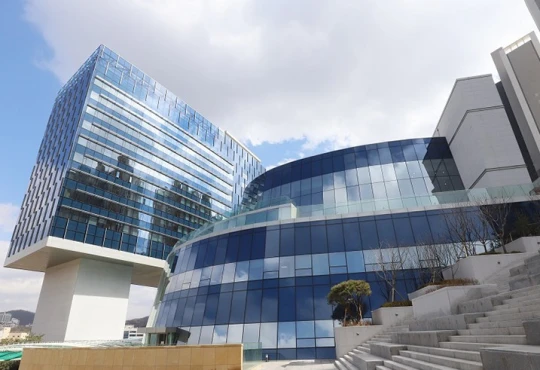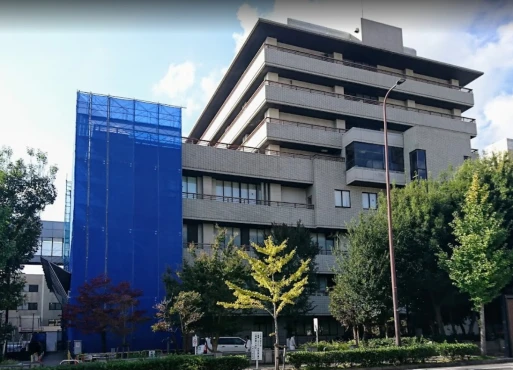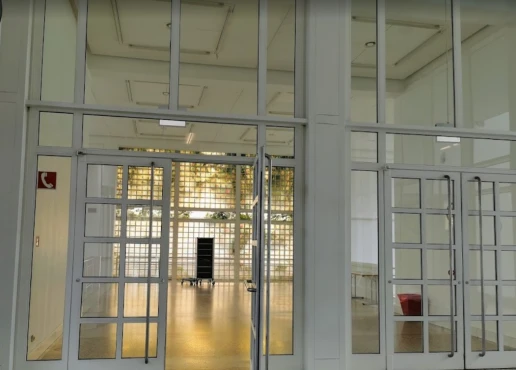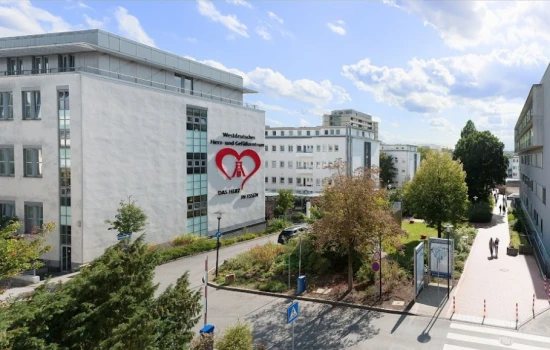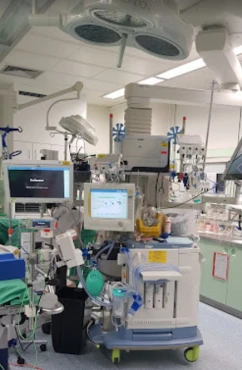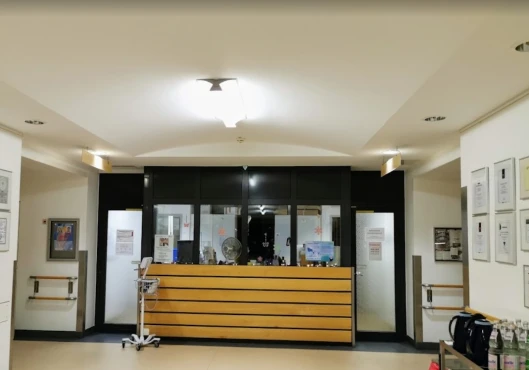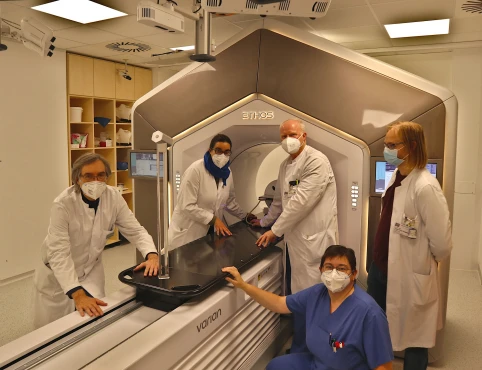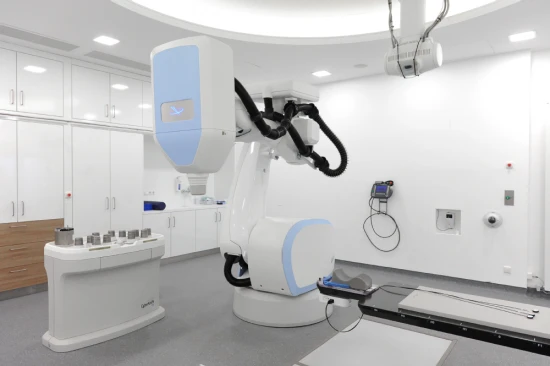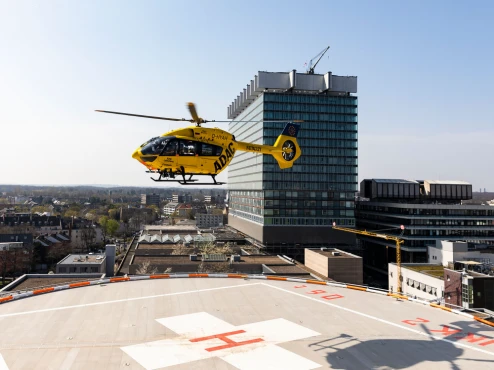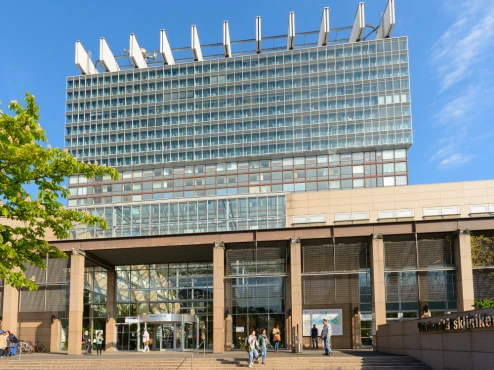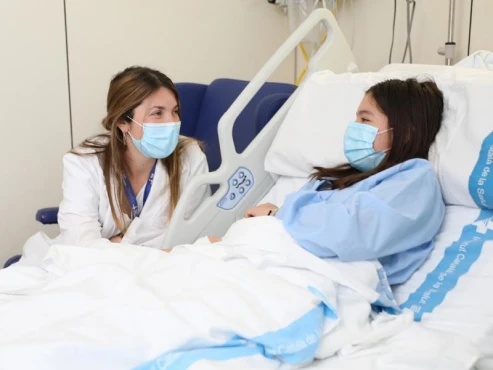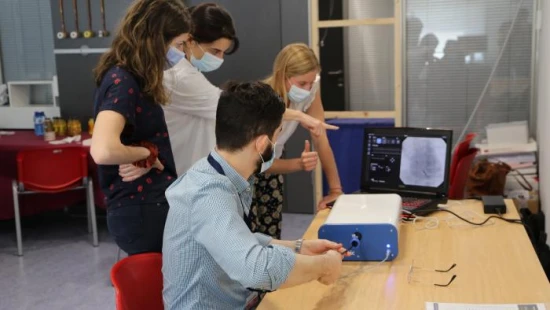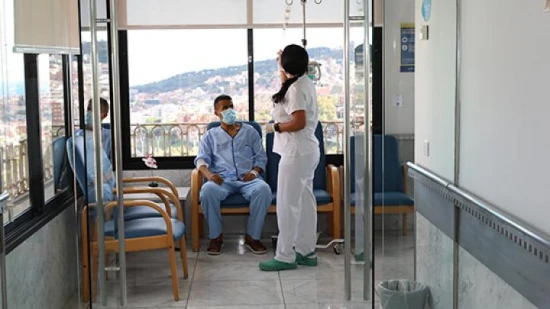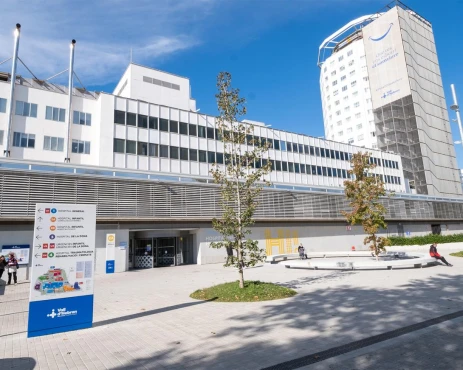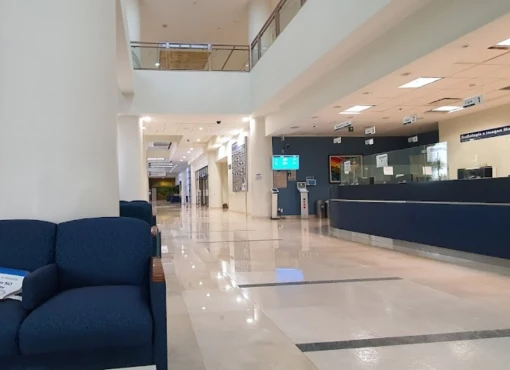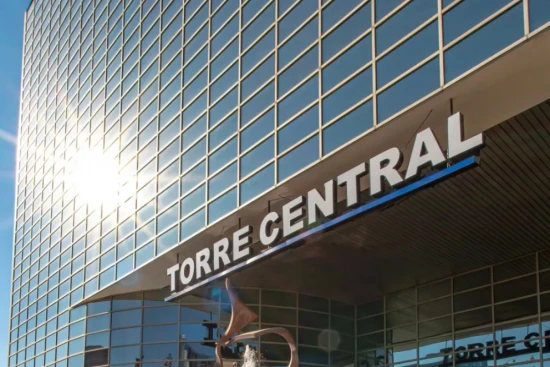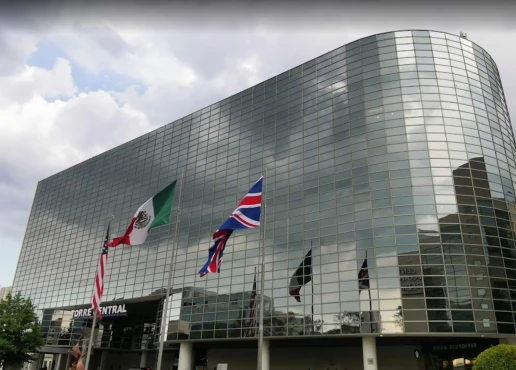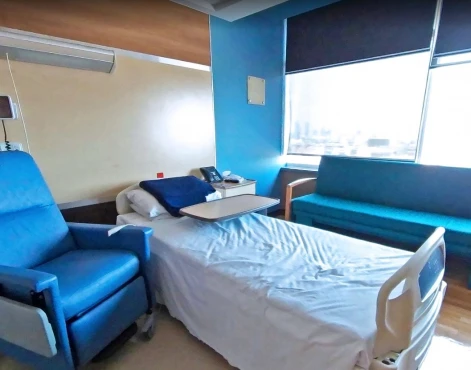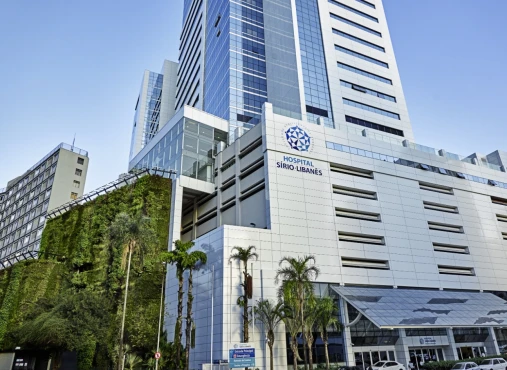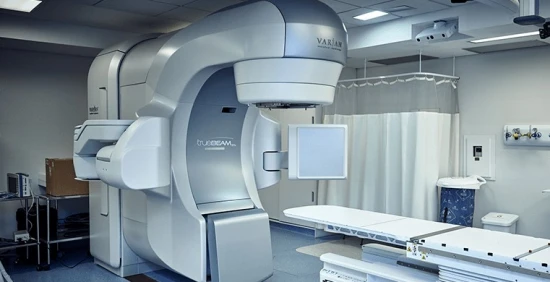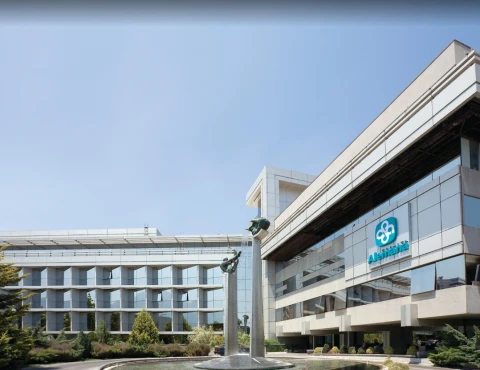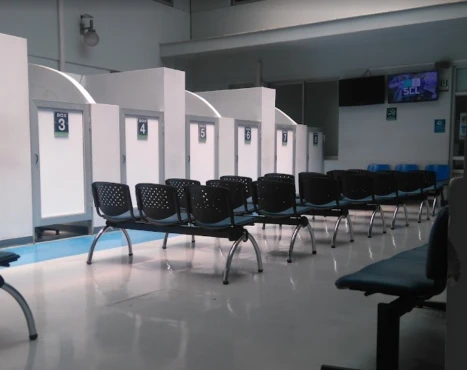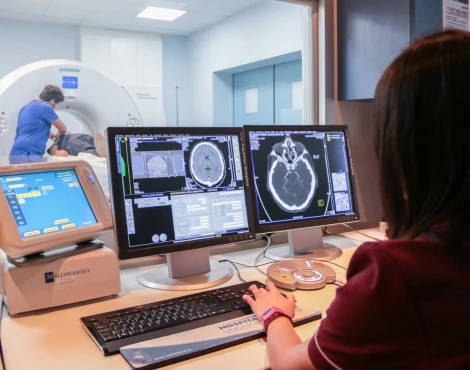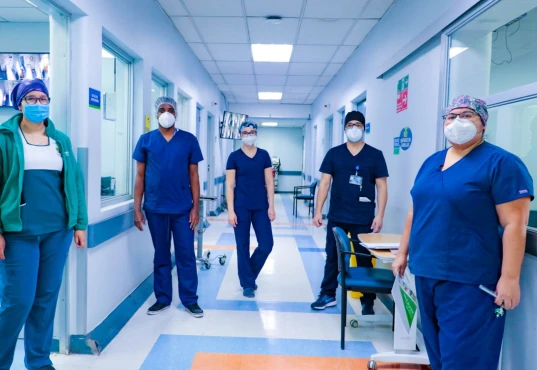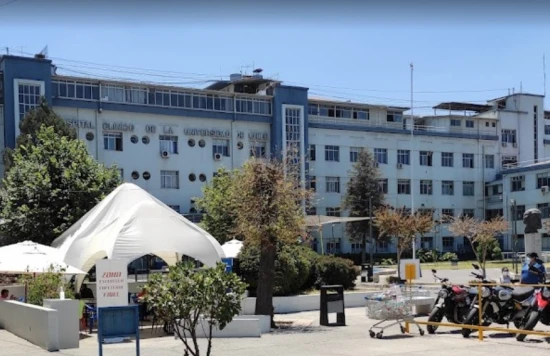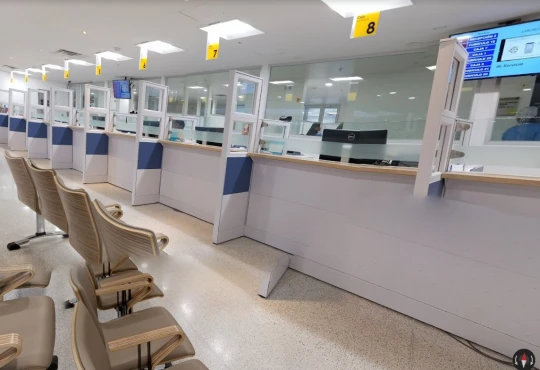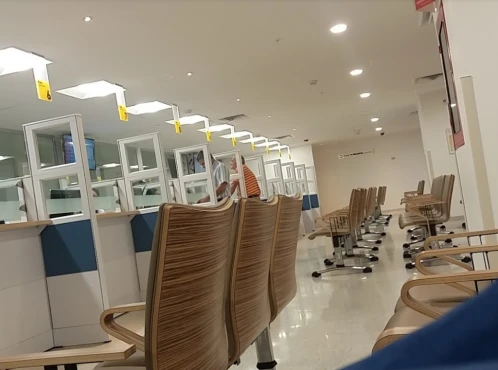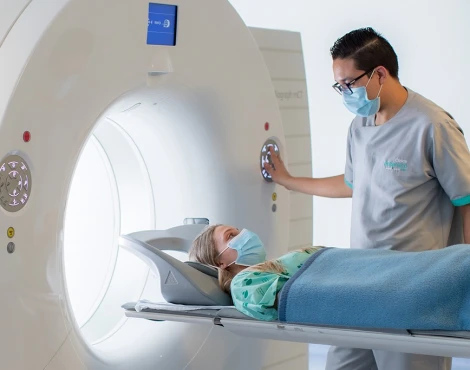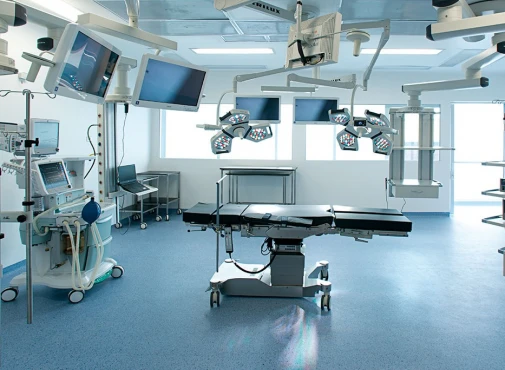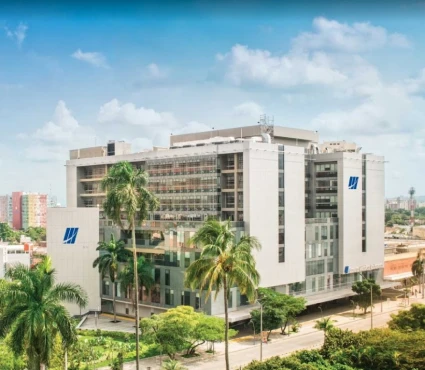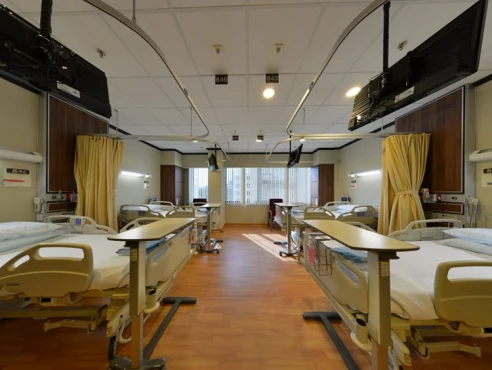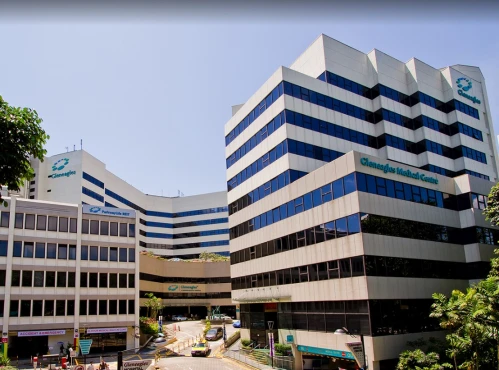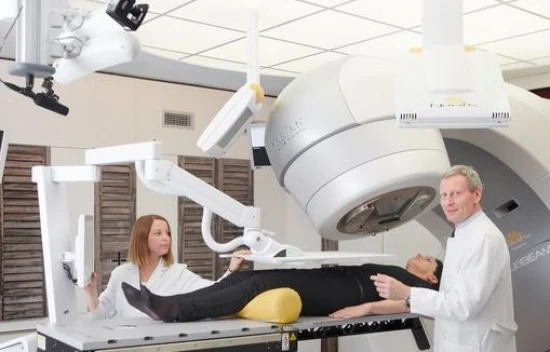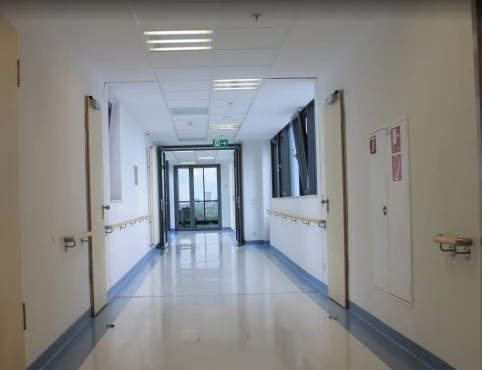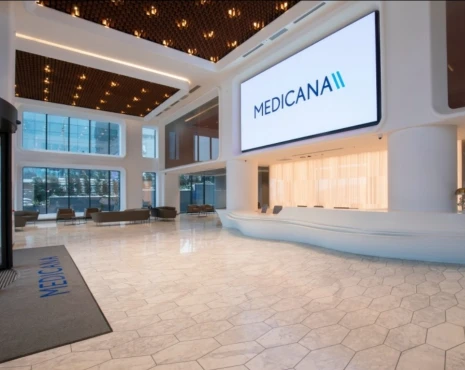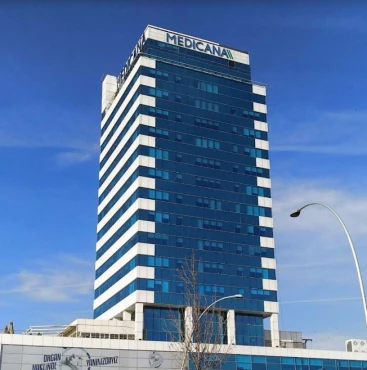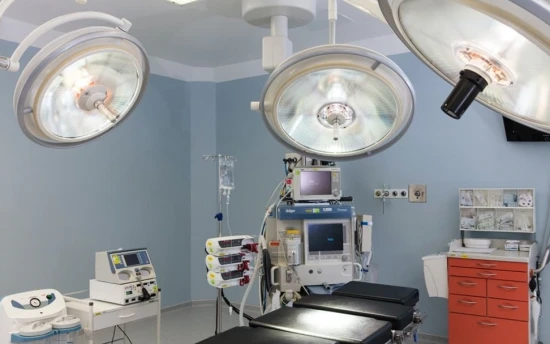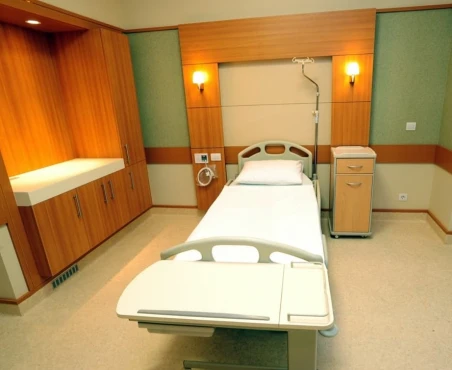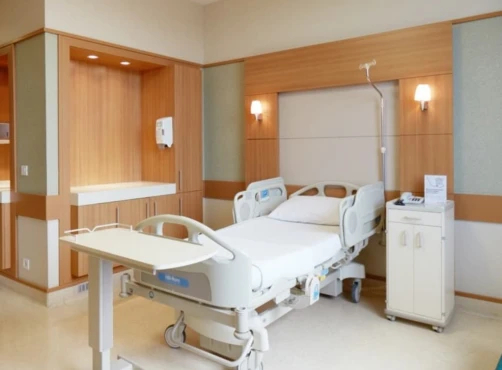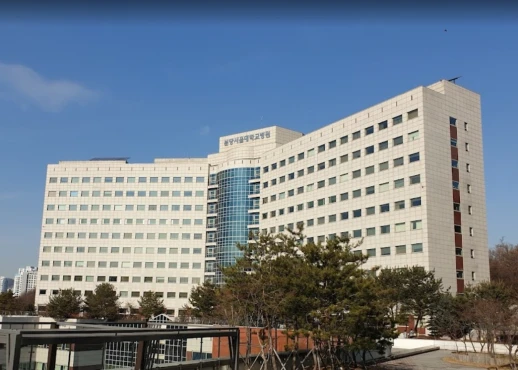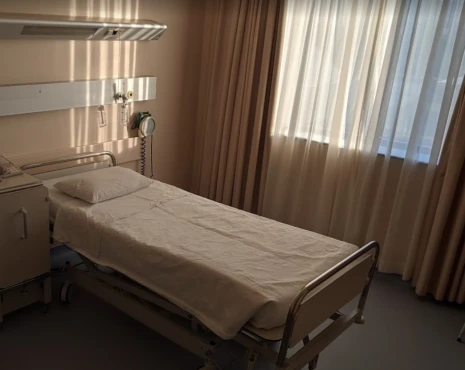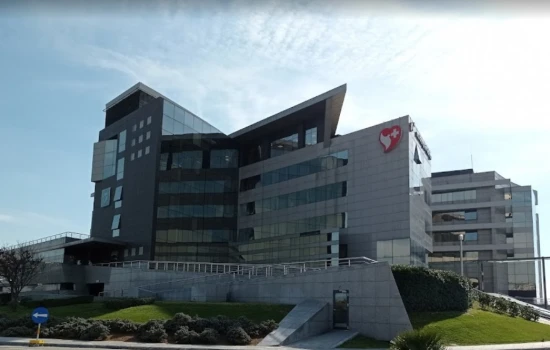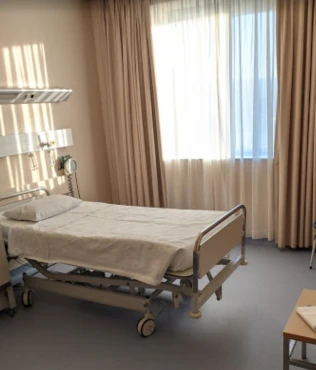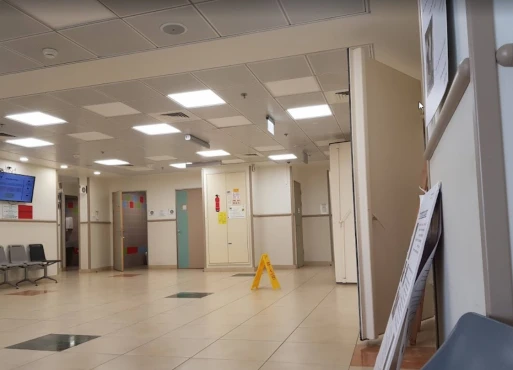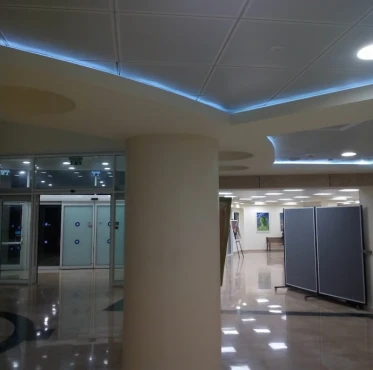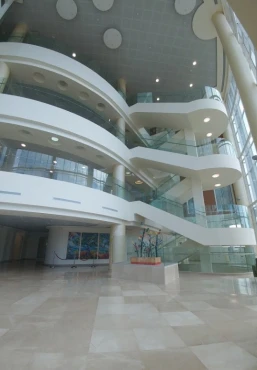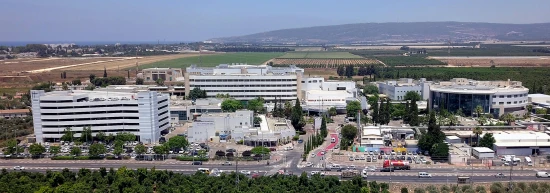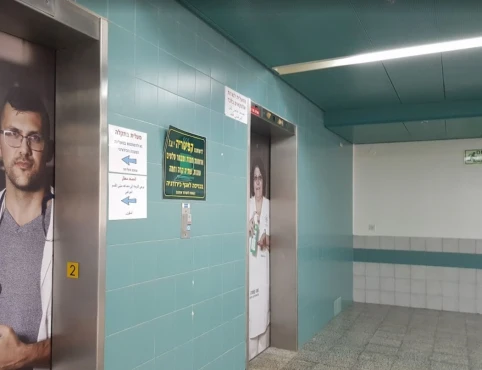Cholestatic liver disease treatment in 153 Oncology clinics worldwide
Top
Clinics
Ratings
Diseases
Quick navigation
153 clinics specializing in Oncology providing treatment of Cholestatic liver disease Cholestatic liver disease refers to conditions that impair the flow of bile from the liver to the intestine. It can cause jaundice, itching, and may require medical management, lifestyle changes, or treatment of the underlying cause. worldwide.
1
from Elodie Lecat
November 27, 2023
I had my MRI there and the purpose was to look for a serious condition. The neurosurgeon barely answered any questions and I had to force him to look at my MRI. It was shocking ! He also refused to write a report for my rheumatologist. I've never seen this. My rheumatologist had to ask for a report to another radiologist and finally we pinpoint the disease !! This behavior is unacceptable and the last time I checked MRI cost me 1 000 $ ! The minimum he could do was to spend 10 minutes to explain me !
5
from Eric Constantino
November 22, 2023
Had an exhilarating stroll around Yonsei campus. There's a bookstore for souvenir university items. Most K dramas have scenes around the campus. Very scenic. A must visit place even for first timers in Korea.
5
from A
November 11, 2023
Great experience as an international traveller. Doctors speak English and tests were done in a swift manner. My travel insurance company worked quickly to make payment so I wasn’t out of pocket.
Prices for popular procedures:
-
Liver transplantation
by request
-
Hemicolectomy
≈ $25,733
-
Rectum anterior resection
≈ $19,361
-
Radical prostatectomy
≈ $16,680
-
Transurethral resection of the prostate (TURP)
≈ $11,867
-
Conization
≈ $3,409
-
Open hysterectomy
≈ $12,108
-
Radical nephrectomy
≈ $23,599
-
Loop electrosurgical excision procedure (LEEP)
≈ $2,680
3.7
5 reviews
1
from Elodie Lecat
November 27, 2023
I had my MRI there and the purpose was to look for a serious condition. The neurosurgeon barely answered any questions and I had to force him to look at my MRI. It was shocking ! He also refused to write a report for my rheumatologist. I've never seen this. My rheumatologist had to ask for a report to another radiologist and finally we pinpoint the disease !! This behavior is unacceptable and the last time I checked MRI cost me 1 000 $ ! The minimum he could do was to spend 10 minutes to explain me !
5
from Eric Constantino
November 22, 2023
Had an exhilarating stroll around Yonsei campus. There's a bookstore for souvenir university items. Most K dramas have scenes around the campus. Very scenic. A must visit place even for first timers in Korea.
5
from A
November 11, 2023
Great experience as an international traveller. Doctors speak English and tests were done in a swift manner. My travel insurance company worked quickly to make payment so I wasn’t out of pocket.
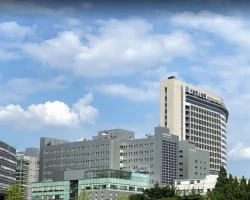
Seoul, South Korea
Specializations: Cardiac surgery, Vascular surgery, Thoracic surgery, Neurosurgery, Spine surgery, Orthopedic surgery, Oncology
Languages: Arabic, Chinese, English, Japanese, Mongolian, Russian
Severance Hospital was thecountry’s first western-stylehospital named Chejungwon. Severance Hospital, founded in 1885 by Dr. H. N. Allen, was the country’s first western-style hospital named
read more
3
from Kelly K
June 11, 2022
Visited Severance hospital to treat an unknown issue on my toe in 2021. It was not treated properly for over 6 months and during that time I visited the dermatology department weekly to ‘treat’ it with laser removal and surgical skin removal. After 6 months of repeated treatments and not improving, they tested the problem. (Yes the first test) The issue they were treating (bacteria) was different from what they had been treating thus far. Saw a slight improvement but the doctor change resulted in the decision to removal part of the nail. The nail was removed and since then have encountered more issues due to the first doctor’s mishaps.
The nursing staff was kind throughout the experience which is why I am giving this review 3 stars. The doctors lack of knowledge on this issue and repeated issues (pain, treatment of the wrong problems) without admitting her wrongdoing caused me extreme stress, pain and damage to my foot.
It felt as this hospital was out to make money. The lack of treatment (in a timely manner) can cause long term damages and suffering. Although the doctors have changed, the Yongin branch does not live up to the standards of other Severance hospitals.
5
from Blo Ndie
March 28, 2022
Very new, clean and accommodating. I come all the way from Seoul here simply for the professionalism and high-quality service. As a foreigner i don't feel like a second class citizen like in most hospitals here in Korea (especially Severance in Shinchon). I've already had 2 surgeries here and I don't think I'll go to another hospital unless time is of the essence and I can't make the hour long trip here.
1
from Aaron Hahn
July 06, 2021
My friend went to the emergency room at the hospital at 2 a.m. and they asked her to wait a while for "emergency surgery," and she had to wait until 4 p.m. (14 hrs later) to get the surgery. As she wanted to move to another hospital because of this this, they simply refused and gave her medicine that caused dizziness and sleepiness. Because she was a foreigner, they didn't listen to her and even cops didn't help her. She felt as though she was kidnapped, but she had to pay for the ordeal. The payment for the wait alone was 300 dollars and the total was over thousands of dollars. They follow only the doctors and look down on the patients here. The worst hospital in the world. An average prison for sure.
Prices for popular procedures:
-
Liver transplantation
by request
-
Hemicolectomy
≈ $25,733
-
Rectum anterior resection
≈ $19,361
-
Total gastrectomy
≈ $36,414
-
Total thyroidectomy
≈ $10,867
-
Pancreaticoduodenectomy
≈ $41,280
-
Simple mastectomy
≈ $16,142
-
Lumpectomy
≈ $6,762
-
Total colectomy
≈ $19,471
3.4
5 reviews
3
from Kelly K
June 11, 2022
Visited Severance hospital to treat an unknown issue on my toe in 2021. It was not treated properly for over 6 months and during that time I visited the dermatology department weekly to ‘treat’ it with laser removal and surgical skin removal. After 6 months of repeated treatments and not improving, they tested the problem. (Yes the first test) The issue they were treating (bacteria) was different from what they had been treating thus far. Saw a slight improvement but the doctor change resulted in the decision to removal part of the nail. The nail was removed and since then have encountered more issues due to the first doctor’s mishaps.
The nursing staff was kind throughout the experience which is why I am giving this review 3 stars. The doctors lack of knowledge on this issue and repeated issues (pain, treatment of the wrong problems) without admitting her wrongdoing caused me extreme stress, pain and damage to my foot.
It felt as this hospital was out to make money. The lack of treatment (in a timely manner) can cause long term damages and suffering. Although the doctors have changed, the Yongin branch does not live up to the standards of other Severance hospitals.
5
from Blo Ndie
March 28, 2022
Very new, clean and accommodating. I come all the way from Seoul here simply for the professionalism and high-quality service. As a foreigner i don't feel like a second class citizen like in most hospitals here in Korea (especially Severance in Shinchon). I've already had 2 surgeries here and I don't think I'll go to another hospital unless time is of the essence and I can't make the hour long trip here.
1
from Aaron Hahn
July 06, 2021
My friend went to the emergency room at the hospital at 2 a.m. and they asked her to wait a while for "emergency surgery," and she had to wait until 4 p.m. (14 hrs later) to get the surgery. As she wanted to move to another hospital because of this this, they simply refused and gave her medicine that caused dizziness and sleepiness. Because she was a foreigner, they didn't listen to her and even cops didn't help her. She felt as though she was kidnapped, but she had to pay for the ordeal. The payment for the wait alone was 300 dollars and the total was over thousands of dollars. They follow only the doctors and look down on the patients here. The worst hospital in the world. An average prison for sure.

Yongin-si, South Korea
Specializations: Cardiac surgery, Vascular surgery, Thoracic surgery, Neurosurgery, Spine surgery, Orthopedic surgery, Oncology
Languages: Arabic, Chinese, English, Japanese, Mongolian, Russian
Yongin Severance Hospital provides safe and high-quality medical services through an efficient system of digital innovation. We pursue a multidisciplinary approach to treatment, under which
read more
4
from Emma M.
October 29, 2023
Super sweet and helpful lady navigated the hospital for me. She spoke in English to me and Japanese to the other employees. Sadly they were unable to help me without a reference letter from another doctor. She did help me find another clinic that was able to treat me, which was super nice!
5
from ひらやまはるひと
August 11, 2023
I am grateful for the robot surgery for hepato-biliary-pancreas transplant surgery.
It was the first time in 30 years since I was in elementary school that I was handicapped by another hospital and gripped the referral letter.
I started out as an outpatient with an uneasy feeling,
My primary care doctor was calm and gave me peace of mind.
I can't believe I can talk like this and be listened to
I don't know if you can explain this much. I was just amazed.
Both the outpatient nurses and the staff are very professional and behave
It was lovely.
From there, I had regular outpatient visits until the surgery date was decided.
It was my first general anesthesia, and I don't remember the 34 days after the surgery, but everyone on the team, the CCU, the nurses in the ward, the assistants, and the staff were sincere, and I was relieved. I only remember
I am surprised at how my physical condition changes from day to day.
I am glad that I had my surgery here.
thank you for helping me
5
from ふれいた2号
August 06, 2023
This time, on August 4th, I had my first visit to the department of diabetes endocrinology and metabolism. I received a letter of introduction and an appointment slip from the referral hospital and had a medical examination. Since it is a complete referral reservation system, patients who are completely new to the clinic cannot see a doctor unless they have a letter of introduction and an appointment slip. (This does not apply to emergency outpatient services.)
It was Kyoto University Hospital for the first time in ten years. From childhood to high school, I was treated for cleft lip and palate at our hospital's plastic surgery. It will be a medical examination from then on. The outpatient ward, the Sekitei ward, the middle ward, and the south ward group have changed considerably.
I was prepared that it would take some time to see a diabetic outpatient for the first time. is given a call receiver. This receiver is a versatile device that will notify you with the melody of twinkle twinkle stars and vibration when your turn comes.
Each outpatient has a two-stage waiting system with an outside waiting area, an inside waiting area, and an examination room. It is designed so that patients will not be crowded at once when it is crowded.
A sample test was performed again at the next visit, and a sample test was performed at the end of the consultation this time for comparison. I had the impression that the blood sampling room at other hospitals would be quite crowded, but our hospital was relatively empty, and I had the impression that there were many blood sampling tables and that the turnover was good. Accounting is also done only by submitting the accounting card to the accounting reception if you register the end of the medical examination with the call receiver.
After waiting for about 10 minutes, the medical fee will be displayed on the call receiver, and you will be notified with a sparkling star melody and vibration.
Pay with an automatic payment machine. This time, I was asked to lend out equipment such as a self-monitoring blood glucose meter and measurement sensor, and to issue an out-of-hospital prescription.
I have another appointment in a month, so I'm glad I chose this option.
Prices for popular procedures:
-
Liver transplantation
by request
-
Hemicolectomy
≈ $23,022
-
Rectum anterior resection
≈ $10,990
-
Radical prostatectomy
≈ $13,157
-
Transurethral resection of the prostate (TURP)
≈ $10,358
-
Conization
≈ $4,442
-
Open hysterectomy
≈ $8,697
-
Radical nephrectomy
≈ $23,506
-
Loop electrosurgical excision procedure (LEEP)
≈ $2,616
3.6
5 reviews
4
from Emma M.
October 29, 2023
Super sweet and helpful lady navigated the hospital for me. She spoke in English to me and Japanese to the other employees. Sadly they were unable to help me without a reference letter from another doctor. She did help me find another clinic that was able to treat me, which was super nice!
5
from ひらやまはるひと
August 11, 2023
I am grateful for the robot surgery for hepato-biliary-pancreas transplant surgery.
It was the first time in 30 years since I was in elementary school that I was handicapped by another hospital and gripped the referral letter.
I started out as an outpatient with an uneasy feeling,
My primary care doctor was calm and gave me peace of mind.
I can't believe I can talk like this and be listened to
I don't know if you can explain this much. I was just amazed.
Both the outpatient nurses and the staff are very professional and behave
It was lovely.
From there, I had regular outpatient visits until the surgery date was decided.
It was my first general anesthesia, and I don't remember the 34 days after the surgery, but everyone on the team, the CCU, the nurses in the ward, the assistants, and the staff were sincere, and I was relieved. I only remember
I am surprised at how my physical condition changes from day to day.
I am glad that I had my surgery here.
thank you for helping me
5
from ふれいた2号
August 06, 2023
This time, on August 4th, I had my first visit to the department of diabetes endocrinology and metabolism. I received a letter of introduction and an appointment slip from the referral hospital and had a medical examination. Since it is a complete referral reservation system, patients who are completely new to the clinic cannot see a doctor unless they have a letter of introduction and an appointment slip. (This does not apply to emergency outpatient services.)
It was Kyoto University Hospital for the first time in ten years. From childhood to high school, I was treated for cleft lip and palate at our hospital's plastic surgery. It will be a medical examination from then on. The outpatient ward, the Sekitei ward, the middle ward, and the south ward group have changed considerably.
I was prepared that it would take some time to see a diabetic outpatient for the first time. is given a call receiver. This receiver is a versatile device that will notify you with the melody of twinkle twinkle stars and vibration when your turn comes.
Each outpatient has a two-stage waiting system with an outside waiting area, an inside waiting area, and an examination room. It is designed so that patients will not be crowded at once when it is crowded.
A sample test was performed again at the next visit, and a sample test was performed at the end of the consultation this time for comparison. I had the impression that the blood sampling room at other hospitals would be quite crowded, but our hospital was relatively empty, and I had the impression that there were many blood sampling tables and that the turnover was good. Accounting is also done only by submitting the accounting card to the accounting reception if you register the end of the medical examination with the call receiver.
After waiting for about 10 minutes, the medical fee will be displayed on the call receiver, and you will be notified with a sparkling star melody and vibration.
Pay with an automatic payment machine. This time, I was asked to lend out equipment such as a self-monitoring blood glucose meter and measurement sensor, and to issue an out-of-hospital prescription.
I have another appointment in a month, so I'm glad I chose this option.
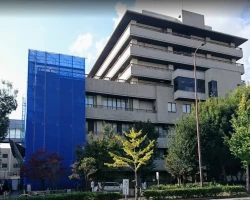
Kyoto, Japan
Specializations: Cardiac surgery, Vascular surgery, Thoracic surgery, Neurosurgery, Spine surgery, Orthopedic surgery, Oncology
Kyoto University Hospital was established in 1899, we have a 120-year history. We are committed to providing safe, relief medical care based on this three
read more
1
from G S
July 28, 2023
Do not go here. In our experience there, they did not take our pain seriously. On top of that, they made sexist comments!! I would not recommend this place to anyone for anything.
5
from SUKANYA PRUSTY
January 15, 2023
I have visited Orthopedics department 2 times, really awesome service. Could be better, little more waiting time however currently it is really good, humble staffs and polite in nature.
1
from Evp128 128
February 03, 2022
Negligent in their duties, they don't follow medical guidelines. Many workers are just arogant and would want you soon out of thier way rather than trying to find the cause for your ailment. It's sad they are a university who make helathcare workers of such low quality.
Prices for popular procedures:
-
Liver transplantation
by request
-
Hemicolectomy
≈ $30,494
-
Rectum anterior resection
≈ $22,559
-
Radical prostatectomy
≈ $21,982
-
Transurethral resection of the prostate (TURP)
≈ $9,747
-
Conization
≈ $5,287
-
Open hysterectomy
≈ $13,555
-
Radical nephrectomy
≈ $31,427
-
Loop electrosurgical excision procedure (LEEP)
≈ $3,115
2.8
5 reviews
1
from G S
July 28, 2023
Do not go here. In our experience there, they did not take our pain seriously. On top of that, they made sexist comments!! I would not recommend this place to anyone for anything.
5
from SUKANYA PRUSTY
January 15, 2023
I have visited Orthopedics department 2 times, really awesome service. Could be better, little more waiting time however currently it is really good, humble staffs and polite in nature.
1
from Evp128 128
February 03, 2022
Negligent in their duties, they don't follow medical guidelines. Many workers are just arogant and would want you soon out of thier way rather than trying to find the cause for your ailment. It's sad they are a university who make helathcare workers of such low quality.

Essen, Germany
Specializations: Cardiac surgery, Vascular surgery, Thoracic surgery, Neurosurgery, Spine surgery, Orthopedic surgery, Oncology
The University Hospital Essen is part of the University Medicine Essen hospital group . This includes 15 other subsidiaries , including the Ruhrland Clinic, the
read more
2
from theonlycatonice
November 13, 2023
Context: Foreign patient/tourist
Lack of signage for foreign patients is what exacerbated this horrible experience not knowing what is the correct entrance, the fact that you can't go any doctor and must go straight to the emergency reception for example (flat fee is also 200 EU which luckily was refunded by my travel insurance)
1 receptionist out of 7 was friendly, rest were horrible to an ill person despite being polite as possible
1 doctor in the emergency ward was pretty careless after dismissing me from the hospital (and was dismissive), not even providing a proper dressed bandage for my wound after removing a drip needle that was never used to give fluids (something usually done for pain or dehydration - I was expecting some for relief but none was given)
A trainee had better bedside manners
The doctors in the gyni section were absolutely fantastic, explaining everything, being friendly etc.
However, nothing was found for the cause of my pain which was distressing and no pain relief was offered even.
A traumatic experience for someone traveling alone.
I hope this review helps someone in the future.
Will never be traveling back to Cologne as the reception to tourists is 99% of the time cold as ice.
4
from Mohamed Nassef
November 10, 2023
First , I can not comment on medical services , but the buildings and the arrangements, the wide variety of specialties and advanced equipment all are amazing. Well organized campus.
5
from Zhivko Todorov
October 22, 2023
My wife gave birth there. This was the only good experience we had in hospitals. I want to give thumbs up for the best team in the world and especially to Frau Hannah. 🙏
Prices for popular procedures:
-
Liver transplantation
by request
-
Hemicolectomy
≈ $30,494
-
Rectum anterior resection
≈ $22,559
-
Radical prostatectomy
≈ $21,982
-
Transurethral resection of the prostate (TURP)
≈ $9,747
-
Conization
≈ $5,287
-
Open hysterectomy
≈ $13,555
-
Radical nephrectomy
≈ $31,427
-
Loop electrosurgical excision procedure (LEEP)
≈ $3,115
3.1
5 reviews
2
from theonlycatonice
November 13, 2023
Context: Foreign patient/tourist
Lack of signage for foreign patients is what exacerbated this horrible experience not knowing what is the correct entrance, the fact that you can't go any doctor and must go straight to the emergency reception for example (flat fee is also 200 EU which luckily was refunded by my travel insurance)
1 receptionist out of 7 was friendly, rest were horrible to an ill person despite being polite as possible
1 doctor in the emergency ward was pretty careless after dismissing me from the hospital (and was dismissive), not even providing a proper dressed bandage for my wound after removing a drip needle that was never used to give fluids (something usually done for pain or dehydration - I was expecting some for relief but none was given)
A trainee had better bedside manners
The doctors in the gyni section were absolutely fantastic, explaining everything, being friendly etc.
However, nothing was found for the cause of my pain which was distressing and no pain relief was offered even.
A traumatic experience for someone traveling alone.
I hope this review helps someone in the future.
Will never be traveling back to Cologne as the reception to tourists is 99% of the time cold as ice.
4
from Mohamed Nassef
November 10, 2023
First , I can not comment on medical services , but the buildings and the arrangements, the wide variety of specialties and advanced equipment all are amazing. Well organized campus.
5
from Zhivko Todorov
October 22, 2023
My wife gave birth there. This was the only good experience we had in hospitals. I want to give thumbs up for the best team in the world and especially to Frau Hannah. 🙏

Köln, Germany
Specializations: Cardiac surgery, Vascular surgery, Thoracic surgery, Neurosurgery, Spine surgery, Orthopedic surgery, Oncology
Germany is one of the world's leading medical countries worldwide. Its 33 university hospitals form the highest tier of the country's sophisticated healthcare system. The
read more
1
from Eva Tornallyay
September 14, 2023
The hospital oncology is careless and amateur. They mistreared and misdiagnosed a friend of mine for months with cancer. They told him he is fine, whereas he had severe abdominal pain. What kind of doctors work there? Have they not sworn to do no harm??
1
from peter pellerito
February 10, 2023
They just don’t have the knowledge to be doctors or nurses. Sadly, all the hospitals in Spain are like this. You can find some good specialist and surgeons, but that’s about it. Free healthcare=Poor quality.
4
from Clarice Cataldi
October 07, 2021
I have been in Emergency hospitals here in Spain, was first time I got decent treatment, from receptionists, nurses and doctors was perfect the attendance. Do not give 5 stars because they did not make any treatment, because was not my reference Hospital. I think it¨s absurd, anyway was the best I have been in Spain so far.
Prices for popular procedures:
-
Liver transplantation
by request
-
Hemicolectomy
≈ $15,011
-
Rectum anterior resection
≈ $17,164
-
Radical prostatectomy
≈ $12,996
-
Transurethral resection of the prostate (TURP)
≈ $8,584
-
Conization
≈ $2,546
-
Open hysterectomy
≈ $6,055
-
Radical nephrectomy
≈ $14,431
-
Loop electrosurgical excision procedure (LEEP)
≈ $1,605
3.8
5 reviews
1
from Eva Tornallyay
September 14, 2023
The hospital oncology is careless and amateur. They mistreared and misdiagnosed a friend of mine for months with cancer. They told him he is fine, whereas he had severe abdominal pain. What kind of doctors work there? Have they not sworn to do no harm??
1
from peter pellerito
February 10, 2023
They just don’t have the knowledge to be doctors or nurses. Sadly, all the hospitals in Spain are like this. You can find some good specialist and surgeons, but that’s about it. Free healthcare=Poor quality.
4
from Clarice Cataldi
October 07, 2021
I have been in Emergency hospitals here in Spain, was first time I got decent treatment, from receptionists, nurses and doctors was perfect the attendance. Do not give 5 stars because they did not make any treatment, because was not my reference Hospital. I think it¨s absurd, anyway was the best I have been in Spain so far.
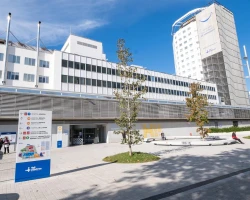
Barcelona, Spain
Specializations: Cardiac surgery, Vascular surgery, Thoracic surgery, Neurosurgery, Spine surgery, Orthopedic surgery, Oncology
The Vall d'Hebron University Hospital is the sum of our four hospitals: the General Hospital, the Children's Hospital, the Women's Hospital and the Traumatology, Rehabilitation
read more
1
from Pedro Arguelles
September 10, 2023
They have a terrible Surgeon, is name is José Antonio Soriano, he was my surgeon and the results of the operation were disastrous, he only cares about money , and not about his patients. I filed a complaint at the hospital and the didn’t do nothing
1
from Charlie C
January 06, 2023
Terrible experience. I tested positive for COVID three days ago, and began Paxlovid and fever reducers immediately. After three days, I am still having symptoms and testing positive.
I called the ambulance to bring me to the hospital. My oxygen was 81 (after a dexamethasone injection and tablet today). The paramedic gave me oxygen right away in the ambulance.
The doctor was useless. He refused to prescribe remdesivir. In nonhospitalized patients with mild to moderate COVID-19 who are at high risk of progressing to severe disease, remdesivir should be started within 7 days of symptom onset and administered for 3 days. The doctors name was Dr. Diego Lecona.
I showed proof of my asthma and low oxygen saturation from prior attacks. He did nothing to help me and didn’t give me the medicine. All he did was charge me over $300 for a useless consult. Never again
5
from Dina Leos
July 19, 2022
Unfortunately I became quite I’ll on a recent trip to Mexico City. The physician on call for the hotel direct me to this hospital. My care in ER was efficient, caring and appropriate. Lilliana and Mezil in Er were so caring and great communicators. I was admitted and again impressed with the care of the team. Very professional and respectful. When called received prompt response. My physician, Dr Jessica was knowledgeable, great personality and did follow thru with communication upon my return home. Highly recommend and hope in US we can rid our staff of the EMR demands that take them away from the bedside. Perhaps then we can be as attentive as the team in this hospital. Thank you to the nurses, housekeeping and residents as well!
Prices for popular procedures:
-
Liver transplantation
by request
-
Hemicolectomy
≈ $9,638
-
Rectum anterior resection
≈ $10,202
-
Radical prostatectomy
≈ $3,062
-
Transurethral resection of the prostate (TURP)
≈ $3,511
-
Radical nephrectomy
≈ $9,864
-
Laparoscopic cholecystectomy
≈ $1,457
-
Total gastrectomy
≈ $18,238
-
Total esophagectomy
≈ $22,674
4.1
5 reviews
1
from Pedro Arguelles
September 10, 2023
They have a terrible Surgeon, is name is José Antonio Soriano, he was my surgeon and the results of the operation were disastrous, he only cares about money , and not about his patients. I filed a complaint at the hospital and the didn’t do nothing
1
from Charlie C
January 06, 2023
Terrible experience. I tested positive for COVID three days ago, and began Paxlovid and fever reducers immediately. After three days, I am still having symptoms and testing positive.
I called the ambulance to bring me to the hospital. My oxygen was 81 (after a dexamethasone injection and tablet today). The paramedic gave me oxygen right away in the ambulance.
The doctor was useless. He refused to prescribe remdesivir. In nonhospitalized patients with mild to moderate COVID-19 who are at high risk of progressing to severe disease, remdesivir should be started within 7 days of symptom onset and administered for 3 days. The doctors name was Dr. Diego Lecona.
I showed proof of my asthma and low oxygen saturation from prior attacks. He did nothing to help me and didn’t give me the medicine. All he did was charge me over $300 for a useless consult. Never again
5
from Dina Leos
July 19, 2022
Unfortunately I became quite I’ll on a recent trip to Mexico City. The physician on call for the hotel direct me to this hospital. My care in ER was efficient, caring and appropriate. Lilliana and Mezil in Er were so caring and great communicators. I was admitted and again impressed with the care of the team. Very professional and respectful. When called received prompt response. My physician, Dr Jessica was knowledgeable, great personality and did follow thru with communication upon my return home. Highly recommend and hope in US we can rid our staff of the EMR demands that take them away from the bedside. Perhaps then we can be as attentive as the team in this hospital. Thank you to the nurses, housekeeping and residents as well!

Mexico City, Mexico
Specializations: Cardiac surgery, Vascular surgery, Thoracic surgery, Neurosurgery, Spine surgery, Orthopedic surgery, Oncology
We are an institution that cares for the health and safety of our patients through the best medical practices. We distinguish ourselves by being supportive
read more
1
from Hamid
July 01, 2022
Clean hospital. But extremely expensive. They didn't inform us of the costs and we had to pay 10 times of than other european countries.
1
from Billy Wayne
December 08, 2021
Terrible service. Completely disorganized, does care at all about their patients. I was begging them for help in resolving a billing issue and every department just ignored me. Do not go to this hospital.
I went to this hospital to get an outpatient procedure done which required that I have an attendant with me. The hospital organized for an attendant to be provided, at a fee, from an outside company. On the day of the procedure I was brought to the billing department by member of their "concierge" team, Fernanda. They have an international "concierge" service which basically provides translators so that you can navigate the hospital if your Portugues is not great. At the billing office I was presented with a bill for the cost of the procedure. I agreed to pay it and was then given a credit card machine to make the payment. When the machine arrived, the amount they were requesting was higher than the quoted amount. When I asked Fernanda, she explained that the additional amount was for the cost of the attendant. I paid the invoice and was only provided with a little slip of paper that showed the amount that I had paid. It didn't say what services I had paid for, just that I had paid a certain amount. I then went and got the procedure done. I was put-under, so I don't know how the actual medical procedure went, but from what I saw before I went under, the medical professionals seemed like they were doing a good job. After the procedure was finished, I was brought to the payment office and presented with a new bill. The bill included the additional cost of part of the procedure, the cost to have a biopsy analyzed and the cost of the attendant (which I already paid for). For the next 3 weeks I was going back and forth with the International department, the complaints department and the billing department, trying to get them to acknowledge the fact that I had already paid for the attendant. No one from any of those departments did a single thing to try to help me. Each department passed me off to another department. The complaints department didn't even reply to my complaint. I had to call them up weeks after I had filed a complaint and they were fully aware of the situation, but didn't have enough respect to let me know that they were working on my case or bother to email or call me to help get it resolved. Neither did the International department. When I asked them to help me resolve the issue they just said "this is not my department, I don't know anything about billing" even though FERNANDA was there and was the one that explained to me that I was paying for the the price of the attendant. The billing department just kept sending me the same invoice over and over again and never acknowledging that I had paid for the attendant. It was only when I finally decided to go to the hospital and pay the bill that anything got done. I had to physically go to the International department and demand that they resolve the issue that instant. I spent another 2 hours going to different departments with the "concierge" lady, getting into arguments and explaining over and over what had happened. It was only then, that they acknowledged that the woman who processed my payment allocated the entire amount to the cost of the procedure, which was why this bill for the attendant was still outstanding. At my insistence they finally removed the charge and I was able to pay the invoice. If you go to a Brazilain Hospital, make sure that you get an itemized invoice for every single payment that you make. A little slip of paper with the amount on it is not enough. They will change the amount that you owe them and you have no proof of what you have already paid for. At the end of the day, I probably wasted about 4-5 hours of my time writing emails, sending messages on Whatsapp and arguing with the staff at the hospital. Not to mention all of the frustration it caused. This could have been resolved after 1 email, had anyone at the hospital taken ownership of the problem and been accountable. DO NOT GO HERE - THEY DON'T CARE ABOUT THEIR PATIENTS
5
from Wily Hotspur
March 21, 2019
One of the best hospital in South America
Prices for popular procedures:
-
Liver transplantation
by request
-
Hemicolectomy
≈ $3,071
-
Rectum anterior resection
≈ $2,945
-
Radical prostatectomy
≈ $617
-
Transurethral resection of the prostate (TURP)
≈ $1,991
-
Conization
≈ $637
-
Open hysterectomy
≈ $1,870
-
Radical nephrectomy
≈ $4,228
-
Loop electrosurgical excision procedure (LEEP)
≈ $384
4.4
5 reviews
1
from Hamid
July 01, 2022
Clean hospital. But extremely expensive. They didn't inform us of the costs and we had to pay 10 times of than other european countries.
1
from Billy Wayne
December 08, 2021
Terrible service. Completely disorganized, does care at all about their patients. I was begging them for help in resolving a billing issue and every department just ignored me. Do not go to this hospital.
I went to this hospital to get an outpatient procedure done which required that I have an attendant with me. The hospital organized for an attendant to be provided, at a fee, from an outside company. On the day of the procedure I was brought to the billing department by member of their "concierge" team, Fernanda. They have an international "concierge" service which basically provides translators so that you can navigate the hospital if your Portugues is not great. At the billing office I was presented with a bill for the cost of the procedure. I agreed to pay it and was then given a credit card machine to make the payment. When the machine arrived, the amount they were requesting was higher than the quoted amount. When I asked Fernanda, she explained that the additional amount was for the cost of the attendant. I paid the invoice and was only provided with a little slip of paper that showed the amount that I had paid. It didn't say what services I had paid for, just that I had paid a certain amount. I then went and got the procedure done. I was put-under, so I don't know how the actual medical procedure went, but from what I saw before I went under, the medical professionals seemed like they were doing a good job. After the procedure was finished, I was brought to the payment office and presented with a new bill. The bill included the additional cost of part of the procedure, the cost to have a biopsy analyzed and the cost of the attendant (which I already paid for). For the next 3 weeks I was going back and forth with the International department, the complaints department and the billing department, trying to get them to acknowledge the fact that I had already paid for the attendant. No one from any of those departments did a single thing to try to help me. Each department passed me off to another department. The complaints department didn't even reply to my complaint. I had to call them up weeks after I had filed a complaint and they were fully aware of the situation, but didn't have enough respect to let me know that they were working on my case or bother to email or call me to help get it resolved. Neither did the International department. When I asked them to help me resolve the issue they just said "this is not my department, I don't know anything about billing" even though FERNANDA was there and was the one that explained to me that I was paying for the the price of the attendant. The billing department just kept sending me the same invoice over and over again and never acknowledging that I had paid for the attendant. It was only when I finally decided to go to the hospital and pay the bill that anything got done. I had to physically go to the International department and demand that they resolve the issue that instant. I spent another 2 hours going to different departments with the "concierge" lady, getting into arguments and explaining over and over what had happened. It was only then, that they acknowledged that the woman who processed my payment allocated the entire amount to the cost of the procedure, which was why this bill for the attendant was still outstanding. At my insistence they finally removed the charge and I was able to pay the invoice. If you go to a Brazilain Hospital, make sure that you get an itemized invoice for every single payment that you make. A little slip of paper with the amount on it is not enough. They will change the amount that you owe them and you have no proof of what you have already paid for. At the end of the day, I probably wasted about 4-5 hours of my time writing emails, sending messages on Whatsapp and arguing with the staff at the hospital. Not to mention all of the frustration it caused. This could have been resolved after 1 email, had anyone at the hospital taken ownership of the problem and been accountable. DO NOT GO HERE - THEY DON'T CARE ABOUT THEIR PATIENTS
5
from Wily Hotspur
March 21, 2019
One of the best hospital in South America
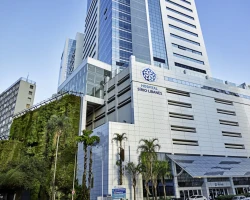
São Paulo, Brazil
Specializations: Cardiac surgery, Vascular surgery, Thoracic surgery, Neurosurgery, Spine surgery, Orthopedic surgery, Oncology
Hospital Sírio-Libanês, in Bela Vista, is a reference center for highly complex procedures and integrated action in various specialties, such as Cardiology and Oncology .
read more
1
from Cycosh Schneil
April 10, 2023
Bad Service, the doctor didn't examine my girlfriend Anna properly, we paid 70€ and after two weeks she is still sick.
1
from Alex Sh
August 22, 2022
Extremely bad hospital. One people doesn’t understand what doing other..
Contract’s conditions always changing same with fraud. On the start they promise one but finally u will left money more more more that for same service in USA! Stupid management!!!
1
from Alex Shaman
August 22, 2022
Very stupid international service!!! They change conditions more than 4 times before baby delivery!!! They want much more money but don’t understand self final conditions. Finally in last week we was need change hospital.
Prices for popular procedures:
-
Liver transplantation
by request
-
Hemicolectomy
≈ $6,839
-
Rectum anterior resection
≈ $7,566
-
Radical prostatectomy
≈ $6,793
-
Transurethral resection of the prostate (TURP)
≈ $3,163
-
Conization
≈ $1,263
-
Open hysterectomy
≈ $2,068
-
Radical nephrectomy
≈ $7,029
-
Loop electrosurgical excision procedure (LEEP)
≈ $901
3.9
5 reviews
1
from Cycosh Schneil
April 10, 2023
Bad Service, the doctor didn't examine my girlfriend Anna properly, we paid 70€ and after two weeks she is still sick.
1
from Alex Sh
August 22, 2022
Extremely bad hospital. One people doesn’t understand what doing other..
Contract’s conditions always changing same with fraud. On the start they promise one but finally u will left money more more more that for same service in USA! Stupid management!!!
1
from Alex Shaman
August 22, 2022
Very stupid international service!!! They change conditions more than 4 times before baby delivery!!! They want much more money but don’t understand self final conditions. Finally in last week we was need change hospital.

Vitacura, Chile
Specializations: Cardiac surgery, Vascular surgery, Thoracic surgery, Neurosurgery, Spine surgery, Orthopedic surgery, Oncology
Languages: English
This health center is part of a joint-stock company called Grupo Alemana SpA, whose sole owner is the Corporación Chileno Alemana de Beneficencia, a non-profit
read more
4
from Geraldine Torres
November 22, 2023
The place is old, but the people who serve are super friendly, they went overboard!!!
4
from David Candia
October 22, 2023
In general it is old, the elevators are bad, slow and it is super big, the facilities are a little poorly maintained, the elevators and in my case to access the arrhythmia secretariat you have to go with a map and counting the steps go up to 5 and then go down to 4 because there is a closed part of the hospital. But as excellent quality specialists and within everything they comply with everything. (There is very little availability of hours).
2
from Dr. Naz
January 05, 2023
Terrible attention. This place needs better customer service.
Prices for popular procedures:
-
Liver transplantation
$4,904
-
Hemicolectomy
$1,854
-
Rectum anterior resection
≈ $7,566
-
Radical prostatectomy
$1,854
-
Transurethral resection of the prostate (TURP)
≈ $3,163
-
Conization
$691
-
Open hysterectomy
$2,134
-
Radical nephrectomy
$2,287
-
Loop electrosurgical excision procedure (LEEP)
≈ $901
3.4
5 reviews
4
from Geraldine Torres
November 22, 2023
The place is old, but the people who serve are super friendly, they went overboard!!!
4
from David Candia
October 22, 2023
In general it is old, the elevators are bad, slow and it is super big, the facilities are a little poorly maintained, the elevators and in my case to access the arrhythmia secretariat you have to go with a map and counting the steps go up to 5 and then go down to 4 because there is a closed part of the hospital. But as excellent quality specialists and within everything they comply with everything. (There is very little availability of hours).
2
from Dr. Naz
January 05, 2023
Terrible attention. This place needs better customer service.

Independencia, Chile
Specializations: Cardiac surgery, Vascular surgery, Thoracic surgery, Neurosurgery, Spine surgery, Orthopedic surgery, Oncology
Our mission is to be the main University Hospital in the country that, together with the training of excellent health professionals, research and the best
read more
5
from Duvan E idarraga L
March 23, 2023
Ok
1
from Christian Mendoza
July 05, 2022
Imagine being in a wheelchair, trying to get into urgent care for a surgery you had there, and not being helped about when you arrive, somehow managed to get into the triage and then be left alone, then get the need to use the bathroom at a place not clearly design to be used for people with mobility issues, then the only person available to help you is another patient passing by.
It's such a shame that all of this happened here, where I have yet to get medical attention for my urgent needs.
5
from Carolina Murcia
June 16, 2021
One if the best hospitals in Cali. Modern, well staffed, good service
Prices for popular procedures:
-
Liver transplantation
by request
-
Hemicolectomy
≈ $10,556
-
Rectum anterior resection
≈ $10,414
-
Radical prostatectomy
≈ $9,133
-
Transurethral resection of the prostate (TURP)
≈ $4,490
-
Conization
≈ $2,084
-
Open hysterectomy
≈ $3,456
-
Radical nephrectomy
≈ $11,531
-
Loop electrosurgical excision procedure (LEEP)
≈ $1,346
4.2
5 reviews
5
from Duvan E idarraga L
March 23, 2023
Ok
1
from Christian Mendoza
July 05, 2022
Imagine being in a wheelchair, trying to get into urgent care for a surgery you had there, and not being helped about when you arrive, somehow managed to get into the triage and then be left alone, then get the need to use the bathroom at a place not clearly design to be used for people with mobility issues, then the only person available to help you is another patient passing by.
It's such a shame that all of this happened here, where I have yet to get medical attention for my urgent needs.
5
from Carolina Murcia
June 16, 2021
One if the best hospitals in Cali. Modern, well staffed, good service
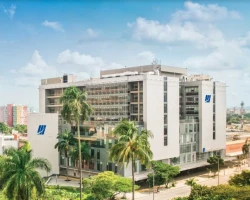
Cali, Colombia
Specializations: Cardiac surgery, Vascular surgery, Thoracic surgery, Neurosurgery, Spine surgery, Orthopedic surgery, Oncology
In the early 1970s, a group of professors from the Universidad del Valle School of Medicine conceived the idea of creating a center for specialists
read more
5
from Sharon LIMTL (AlphaOmega_Life)
November 28, 2023
Gleneagles Hospital
Gleneagles Hospital is a 221-bed private hospital in Singapore that provides a wide range of medical services and surgical treatment.
Trusted, extensive and international - Gleneagles' network of multi-speciality private hospitals provides world-class excellence, from superior clinical outcomes to the highest standards of quality and care.
As the signature international brand under IHH, Gleneagles hospitals are located in Malaysia, Singapore, India, China, Hong Kong and Brunei. Each offers dedicated personalised care and comprehensive modern facilities for ultimate comfort.
Our continuous strive for excellence and superior care has been embedded in our culture since our first hospital opened in Singapore in 1959. At Gleneagles, empathy is at the heart of everything we do. We recognise that feeling better begins with knowing that they are in trusted hands, and that is why our patients and th
1
from Ben Yap
October 21, 2023
Very undesirable environment for some of group of the employees with no SOP from HR. Without proper protocol
for meal time duration. Limited food variety in-house for the group of employees. Shift/annual leave schedule planning with non standard protocol and left it to department in-charge with unequal treatment subjected to their whim and fancy. Management may need to review to provide a better positive work environment to all.
3
from Tot2travel WP
September 03, 2023
Came to one of their clinics located here. Given wrong station exit info by Goggle maps (had to wait and cross the traffic junction twice), and exit 1 is the correct exit that leads up to the hospital.
Staff at the front desk should be more attentive in the morning when patrons approached the desk. Had to "interrupt" to get to the right building.
Prices for popular procedures:
-
Liver transplantation
by request
-
Hemicolectomy
≈ $30,836
-
Radiofrequency ablation (RFA) for liver cancer
≈ $4,307
-
Rectum anterior resection
≈ $24,766
-
Radical prostatectomy
≈ $48,453
-
Transurethral resection of the prostate (TURP)
≈ $18,169
-
Conization
≈ $4,956
-
Open hysterectomy
≈ $14,913
-
Radical nephrectomy
≈ $17,227
3.5
5 reviews
5
from Sharon LIMTL (AlphaOmega_Life)
November 28, 2023
Gleneagles Hospital
Gleneagles Hospital is a 221-bed private hospital in Singapore that provides a wide range of medical services and surgical treatment.
Trusted, extensive and international - Gleneagles' network of multi-speciality private hospitals provides world-class excellence, from superior clinical outcomes to the highest standards of quality and care.
As the signature international brand under IHH, Gleneagles hospitals are located in Malaysia, Singapore, India, China, Hong Kong and Brunei. Each offers dedicated personalised care and comprehensive modern facilities for ultimate comfort.
Our continuous strive for excellence and superior care has been embedded in our culture since our first hospital opened in Singapore in 1959. At Gleneagles, empathy is at the heart of everything we do. We recognise that feeling better begins with knowing that they are in trusted hands, and that is why our patients and th
1
from Ben Yap
October 21, 2023
Very undesirable environment for some of group of the employees with no SOP from HR. Without proper protocol
for meal time duration. Limited food variety in-house for the group of employees. Shift/annual leave schedule planning with non standard protocol and left it to department in-charge with unequal treatment subjected to their whim and fancy. Management may need to review to provide a better positive work environment to all.
3
from Tot2travel WP
September 03, 2023
Came to one of their clinics located here. Given wrong station exit info by Goggle maps (had to wait and cross the traffic junction twice), and exit 1 is the correct exit that leads up to the hospital.
Staff at the front desk should be more attentive in the morning when patrons approached the desk. Had to "interrupt" to get to the right building.
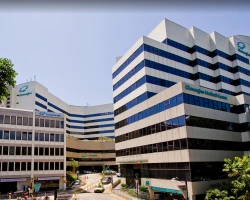
Singapore, Singapore
Specializations: Cardiac surgery, Vascular surgery, Thoracic surgery, Neurosurgery, Spine surgery, Orthopedic surgery, Oncology
Languages: English
Located next to Singapore Botanic Gardens and close to the heart of the local shopping district, Gleneagles Hospital provides specialist, diagnostic and imaging services. This
read more
1
from Mary Meyering
September 25, 2023
We also experienced the worst possible care. We were there the same night, September 11, 2023, when Marcia Lorena recently posted about the inhumane treatment toward her 87 year old grandmother, who the ER refused to treat. We are witnesses to this horrible treatment/nontreatment. We also were ignored for 3 and a 1/2 hours. We believe we were ignored because we are Americans. Several wonderful German women helped us by asking in German when my husband would be seen. They helped us four times. They were appalled that no one would see us. The desk person kept telling us that we had to wait and that they did not speak English. However, they told us a female doctor spoke English and would see us soon, but never did. It was 10pm at night and no one was in the Emergency Room and they still ignored us. During the 3 and 1/2 hours, we saw lesser cases come in and get assistance, while we continued to wait. We eventually left.
I can tell you this would never happen in the United States of America. In the United States, they take you and care for you, no matter what country you are from.
I wish these ER hospital personnel could experience the helplessness that we felt when they ignored us, when they are sick and outside of Germany, but unfortunately, if they are traveling in the United States, they will be well taken care of. Shame on them!
Also, the Hospital Northwest should receive ZERO stars, but I had to give one, to do the post.
5
from Phaerroh
July 09, 2023
I was in for a sleeve gastrectomy and I could not have wished for better care in the week I was there. Absolutely amazing staff!
1
from M S
December 30, 2022
Management needs to be improved. A lady called me to cancel my OP the day before and said I have to wait 2 months even though I did all the pre-OP exams and of course arranged my work for sick leave before 1 week of hospital stay. When I asked if I can have the surgery with the same doctor who examined me, she started to yell, HE'S NOT MY CHEF ANYMORE in German and hung up before I responded. So I had to find another hospital to have OP. I don't understand how they can throw out a patient when their own doctor strongly suggests a surgery urgently. Also, why do they have to get ANGRY at patients just by asking questions who's already suffering and feeling already miserable?
Prices for popular procedures:
-
Liver transplantation
by request
-
Hemicolectomy
≈ $30,494
-
Rectum anterior resection
≈ $22,559
-
Radical prostatectomy
≈ $21,982
-
Transurethral resection of the prostate (TURP)
≈ $9,747
-
Conization
≈ $5,287
-
Open hysterectomy
≈ $13,555
-
Radical nephrectomy
≈ $31,427
-
Loop electrosurgical excision procedure (LEEP)
≈ $3,115
3.0
5 reviews
1
from Mary Meyering
September 25, 2023
We also experienced the worst possible care. We were there the same night, September 11, 2023, when Marcia Lorena recently posted about the inhumane treatment toward her 87 year old grandmother, who the ER refused to treat. We are witnesses to this horrible treatment/nontreatment. We also were ignored for 3 and a 1/2 hours. We believe we were ignored because we are Americans. Several wonderful German women helped us by asking in German when my husband would be seen. They helped us four times. They were appalled that no one would see us. The desk person kept telling us that we had to wait and that they did not speak English. However, they told us a female doctor spoke English and would see us soon, but never did. It was 10pm at night and no one was in the Emergency Room and they still ignored us. During the 3 and 1/2 hours, we saw lesser cases come in and get assistance, while we continued to wait. We eventually left.
I can tell you this would never happen in the United States of America. In the United States, they take you and care for you, no matter what country you are from.
I wish these ER hospital personnel could experience the helplessness that we felt when they ignored us, when they are sick and outside of Germany, but unfortunately, if they are traveling in the United States, they will be well taken care of. Shame on them!
Also, the Hospital Northwest should receive ZERO stars, but I had to give one, to do the post.
5
from Phaerroh
July 09, 2023
I was in for a sleeve gastrectomy and I could not have wished for better care in the week I was there. Absolutely amazing staff!
1
from M S
December 30, 2022
Management needs to be improved. A lady called me to cancel my OP the day before and said I have to wait 2 months even though I did all the pre-OP exams and of course arranged my work for sick leave before 1 week of hospital stay. When I asked if I can have the surgery with the same doctor who examined me, she started to yell, HE'S NOT MY CHEF ANYMORE in German and hung up before I responded. So I had to find another hospital to have OP. I don't understand how they can throw out a patient when their own doctor strongly suggests a surgery urgently. Also, why do they have to get ANGRY at patients just by asking questions who's already suffering and feeling already miserable?
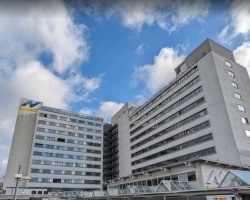
Frankfurt am Main, Germany
Specializations: Cardiac surgery, Vascular surgery, Thoracic surgery, Neurosurgery, Spine surgery, Orthopedic surgery, Oncology
We are a modern specialist care clinic with 503 beds and an academic teaching hospital of the Goethe University in Frankfurt am Main. As a
read more
1
from Suraya Abdulragimova
October 07, 2023
Unfortunately, i have encountered biased towards forwigners attitude here.
I had an appointment at Hasan Ünlütürk on october 6th 14.40. We were late, but registration was completed, payment made and we were waiting in front of doctor's room at 14.55. Doctor was not there, the woman that works with doctor (i will call her hostes) said since we were late he went to another side of the building to treat another patient. I said ok, then doctor came at 15.07. Hostes said that since we were late, she cannot accept us to doctor's room and took TWO other patients in front of us. This was unfair and rude attitude which resulted in us waiting for almost 40 minutes.
1
from hossein nafisinia
August 20, 2023
I don’t recommend this place for foreigners at all.
Their staff are very rude and kind of racist.
After reception didn’t help, we asked their information desk and they sent an English translator (a very good person) with us.
In reception the staff again start fighting with the translator and especially one of them, a woman with hijab, start yelling at us.
I asked the translator the reason and she said they are saying”Turkish people are priority!!!”
A very regular doctor appointment and a blood test took us 4 hours to wait and we were very exhausted.
I’ve been leaving in turkey around 5 years and that’s first and the only time I’ve seen such a bad behavior from Turkish people.
2
from Denis D
January 21, 2023
Should be avoided by foreigners. Irresponsible reception service. My sick son and I visited this hospital at night (3am) in emergency because of high temperature (40 degrees). No one person at reception knew English, no one knew how to apply insurance, no one was interested to help my son quickly - they offered me to wait at reception 2 hours, when pediatrician arrives. Only after pressures by insurance support service they took us to the doctor (very good one, to be honest). If you need to emergency help and professional organisation, chose another hospital.
Prices for popular procedures:
-
Liver transplantation
by request
-
Hemicolectomy
≈ $11,321
-
Rectum anterior resection
≈ $7,788
-
Radical prostatectomy
≈ $5,335
-
Transurethral resection of the prostate (TURP)
≈ $4,353
-
Conization
≈ $1,829
-
Open hysterectomy
≈ $5,010
-
Radical nephrectomy
≈ $11,315
-
Loop electrosurgical excision procedure (LEEP)
≈ $1,182
3.3
5 reviews
1
from Suraya Abdulragimova
October 07, 2023
Unfortunately, i have encountered biased towards forwigners attitude here.
I had an appointment at Hasan Ünlütürk on october 6th 14.40. We were late, but registration was completed, payment made and we were waiting in front of doctor's room at 14.55. Doctor was not there, the woman that works with doctor (i will call her hostes) said since we were late he went to another side of the building to treat another patient. I said ok, then doctor came at 15.07. Hostes said that since we were late, she cannot accept us to doctor's room and took TWO other patients in front of us. This was unfair and rude attitude which resulted in us waiting for almost 40 minutes.
1
from hossein nafisinia
August 20, 2023
I don’t recommend this place for foreigners at all.
Their staff are very rude and kind of racist.
After reception didn’t help, we asked their information desk and they sent an English translator (a very good person) with us.
In reception the staff again start fighting with the translator and especially one of them, a woman with hijab, start yelling at us.
I asked the translator the reason and she said they are saying”Turkish people are priority!!!”
A very regular doctor appointment and a blood test took us 4 hours to wait and we were very exhausted.
I’ve been leaving in turkey around 5 years and that’s first and the only time I’ve seen such a bad behavior from Turkish people.
2
from Denis D
January 21, 2023
Should be avoided by foreigners. Irresponsible reception service. My sick son and I visited this hospital at night (3am) in emergency because of high temperature (40 degrees). No one person at reception knew English, no one knew how to apply insurance, no one was interested to help my son quickly - they offered me to wait at reception 2 hours, when pediatrician arrives. Only after pressures by insurance support service they took us to the doctor (very good one, to be honest). If you need to emergency help and professional organisation, chose another hospital.

Istanbul, Turkey
Specializations: Cardiac surgery, Vascular surgery, Thoracic surgery, Neurosurgery, Spine surgery, Orthopedic surgery, Oncology
Medicana Ataşehir Hosptial, which will be one of the most important healthcare centers not only in Turkey but also in Europe, is planned to deliver
read more
1
from Gary Heerkens
May 09, 2023
This hospital is very bad. They don’t know what communication is. This is not Medicana (International) but MediKill Turkey. Stay away from Selin Merih Urlu and Ugur Sahin. these two are not doctors but butchers. They killed my best friend with cancer treatment. Gary from Holland.
5
from Volkan Sahinkaya
March 08, 2023
Had an operation at the orthopedics department and stayed for a day. The close attention of the medical staff (especially Ms. Ece, my nurse) and the competence level of my doctor, Prof Dr. Şadan Ay were amazing. I don't recommend anybody to get sick but if you are sick this hospital is the right chouce to receive the best treatment
1
from BS DZ
June 10, 2022
I was really disappointed about the service,my wife had to wait for more than 30 minutes to perform a PCR test even we were the only ones looking for the PCR test. The day after I went to get the results they couldn't even have the results paper in an envelope. They just gave us the paper. I hope you will improve your services and pay attention on those observations.
Prices for popular procedures:
-
Liver transplantation
by request
-
Hemicolectomy
≈ $11,321
-
Rectum anterior resection
≈ $7,788
-
Radical prostatectomy
≈ $5,335
-
Transurethral resection of the prostate (TURP)
≈ $4,353
-
Conization
≈ $1,829
-
Open hysterectomy
≈ $5,010
-
Radical nephrectomy
≈ $11,315
-
Loop electrosurgical excision procedure (LEEP)
≈ $1,182
3.5
5 reviews
1
from Gary Heerkens
May 09, 2023
This hospital is very bad. They don’t know what communication is. This is not Medicana (International) but MediKill Turkey. Stay away from Selin Merih Urlu and Ugur Sahin. these two are not doctors but butchers. They killed my best friend with cancer treatment. Gary from Holland.
5
from Volkan Sahinkaya
March 08, 2023
Had an operation at the orthopedics department and stayed for a day. The close attention of the medical staff (especially Ms. Ece, my nurse) and the competence level of my doctor, Prof Dr. Şadan Ay were amazing. I don't recommend anybody to get sick but if you are sick this hospital is the right chouce to receive the best treatment
1
from BS DZ
June 10, 2022
I was really disappointed about the service,my wife had to wait for more than 30 minutes to perform a PCR test even we were the only ones looking for the PCR test. The day after I went to get the results they couldn't even have the results paper in an envelope. They just gave us the paper. I hope you will improve your services and pay attention on those observations.
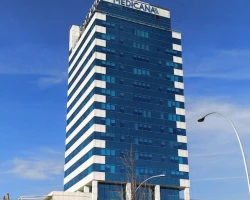
Ankara, Turkey
Specializations: Cardiac surgery, Vascular surgery, Thoracic surgery, Neurosurgery, Spine surgery, Orthopedic surgery, Oncology
Providing world-class health services since 2008, Medicana International Ankara Hospital is one of the most important investments in the health sector, which has managed
read more
1
from Hala Mejanni
October 21, 2023
Disrespectful and unprofessional Long waiting time (3 hours) after which the Opthomologist decided he will not perform any additional test since this is a follow-up visit. He is rude, unprofessional and deserves to be notified for his unhumane behavior.
1
from Ertunç Dinç
August 27, 2023
I went along with my antibiotic medication. Despite having private health insurance, they charged me 150 TL for just one injection. Other private hospitals are charging only 45 TL. I will definitely not choose this place next time.
1
from Red Carpet
August 13, 2023
I went through a horrible botched surgery at this hospital by Prof. Dr. Necmettin Kutlu. I am left with necrosis, ischemia, and skin ulcers. Yellow liquid does not stop coming out. I can't move, walk nor sleep. He caused a permanent damaged to my skin so I have to redo another plastic surgery to fix all those issues up. He left me with no surgical corset as he did not have my size so after healing, my skin will be wavy, I was near death and God kept me alive. Do not go there please. Besides translation team makes fun of patients. Very poisoned environment.
Prices for popular procedures:
-
Liver transplantation
by request
-
Hemicolectomy
≈ $11,321
-
Rectum anterior resection
≈ $7,788
-
Radical prostatectomy
≈ $5,335
-
Transurethral resection of the prostate (TURP)
≈ $4,353
-
Conization
≈ $1,829
-
Open hysterectomy
≈ $5,010
-
Radical nephrectomy
≈ $11,315
-
Loop electrosurgical excision procedure (LEEP)
≈ $1,182
3.4
5 reviews
1
from Hala Mejanni
October 21, 2023
Disrespectful and unprofessional Long waiting time (3 hours) after which the Opthomologist decided he will not perform any additional test since this is a follow-up visit. He is rude, unprofessional and deserves to be notified for his unhumane behavior.
1
from Ertunç Dinç
August 27, 2023
I went along with my antibiotic medication. Despite having private health insurance, they charged me 150 TL for just one injection. Other private hospitals are charging only 45 TL. I will definitely not choose this place next time.
1
from Red Carpet
August 13, 2023
I went through a horrible botched surgery at this hospital by Prof. Dr. Necmettin Kutlu. I am left with necrosis, ischemia, and skin ulcers. Yellow liquid does not stop coming out. I can't move, walk nor sleep. He caused a permanent damaged to my skin so I have to redo another plastic surgery to fix all those issues up. He left me with no surgical corset as he did not have my size so after healing, my skin will be wavy, I was near death and God kept me alive. Do not go there please. Besides translation team makes fun of patients. Very poisoned environment.

Istanbul, Turkey
Specializations: Cardiac surgery, Vascular surgery, Thoracic surgery, Neurosurgery, Spine surgery, Orthopedic surgery, Oncology
Languages: Arabic, English, Kurdish, Russian, Somali
Medicana International Istanbul has an indoor area of 30,000 m2. It consists of two linked departments, including inpatient floors and outpatient floors. Our hospital was
read more
1
from Scarlett Rosemint
December 17, 2022
Literally the most frustrating experience ever. They asked me so many questions before an appointment was made and they said I was cleared and everything was set for the day they'll see me. I arrive to my appointment and was turned away and was told something completely different than what they told me on the phone. They even had the audacity to say come next week instead than we can check you. Worst place.
Don't go there especially if you're a foreigner.
5
from SaintBread
December 11, 2022
souls fly loose. Feeling to the like now. We flew, here forever.
1
from Tinbit Mesikir
May 23, 2022
Ewha women's university hispital emmergency service is the most disgusting hospital in seoul.my baby was failed from table and injured on his forehead,teeth and tounge and i went to this emmergency to check if brain trauma happened to my baby or not.but,amazingly they said first test corona but he has no any sign and they sent us to quarantine room and locked it.....waiting there longgggg time with this little baby who was hungry and sick.so am so upset and left the hospital.what kind of hospital is it?howmany time should i wait in that locked room alone?
Prices for popular procedures:
-
Liver transplantation
by request
-
Hemicolectomy
≈ $25,733
-
Rectum anterior resection
≈ $19,361
-
Radical prostatectomy
≈ $16,680
-
Transurethral resection of the prostate (TURP)
≈ $11,867
-
Conization
≈ $3,409
-
Open hysterectomy
≈ $12,108
-
Radical nephrectomy
≈ $23,599
-
Loop electrosurgical excision procedure (LEEP)
≈ $2,680
3.0
5 reviews
1
from Scarlett Rosemint
December 17, 2022
Literally the most frustrating experience ever. They asked me so many questions before an appointment was made and they said I was cleared and everything was set for the day they'll see me. I arrive to my appointment and was turned away and was told something completely different than what they told me on the phone. They even had the audacity to say come next week instead than we can check you. Worst place.
Don't go there especially if you're a foreigner.
5
from SaintBread
December 11, 2022
souls fly loose. Feeling to the like now. We flew, here forever.
1
from Tinbit Mesikir
May 23, 2022
Ewha women's university hispital emmergency service is the most disgusting hospital in seoul.my baby was failed from table and injured on his forehead,teeth and tounge and i went to this emmergency to check if brain trauma happened to my baby or not.but,amazingly they said first test corona but he has no any sign and they sent us to quarantine room and locked it.....waiting there longgggg time with this little baby who was hungry and sick.so am so upset and left the hospital.what kind of hospital is it?howmany time should i wait in that locked room alone?
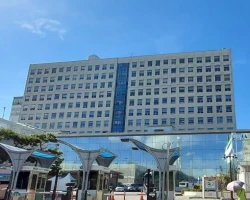
Seoul, South Korea
Specializations: Cardiac surgery, Vascular surgery, Thoracic surgery, Neurosurgery, Spine surgery, Orthopedic surgery, Oncology
Languages: Arabic, Chinese, English, Mongolian, Russian
Ewha Womans University Mokdong Hospital is the only women's medical school affiliated in Korea and has been loved by customers through continuous innovation activities based
read more
1
from Jiye Lee
August 01, 2023
Because this is a bigger hospital, I had a endometrial polyp removal surgery here. The male doctor (Ji Byeong Cheol) however, botched up my surgery and I continued to be in pain and bleed for months. His attitude was extremely rude and vague when asked questions and claimed I was the only patient to have issues. He then suggested we arrange an endoscopy. I decided not to go with the endoscopy with him as I already had trust issues. In the end I had to get a second surgery from another hospital four months later. It turned out my polyps were not removed and bacteria had spread inside my womb causing an infection. Hence the pain and why I had to wait a longer time to recover before I could get the second surgery. I didn't even see Ji Byeong Cheol’s face before or after my surgery nor receive any explanation and was dismissed right away, so to be honest, I don't even know whether he performed it. The worst and most traumatic experience of my life.
4
from mike chang
June 19, 2023
Large hospital in excellent condition, it gets crazy busy during the day. They definitely need more parking, elevators and pretty much everything else.
1
from Rahul Singh
December 20, 2022
Nurse station in the department of dermatologist they have no manners when u talk to them they just watching their phone no any reply and their behavior is so rude. i experienced on 20221219 around 12 noon. i will give 0 point.
And also doctor's has no experience they just remember some medicines name and prescrib those everytime no matter what problems patient have everytime they are just sale their some cosmetic products. I recommend them to open cosmetics shop instead of treats patient.
Prices for popular procedures:
-
Liver transplantation
by request
-
Hemicolectomy
≈ $25,733
-
Rectum anterior resection
≈ $19,361
-
Parotidectomy
≈ $7,421
-
Total gastrectomy
≈ $36,414
-
Total thyroidectomy
≈ $10,867
-
Major liver resection
≈ $27,211
-
Pancreaticoduodenectomy
≈ $41,280
-
Cervical lymphadenectomy
≈ $13,784
3.8
5 reviews
1
from Jiye Lee
August 01, 2023
Because this is a bigger hospital, I had a endometrial polyp removal surgery here. The male doctor (Ji Byeong Cheol) however, botched up my surgery and I continued to be in pain and bleed for months. His attitude was extremely rude and vague when asked questions and claimed I was the only patient to have issues. He then suggested we arrange an endoscopy. I decided not to go with the endoscopy with him as I already had trust issues. In the end I had to get a second surgery from another hospital four months later. It turned out my polyps were not removed and bacteria had spread inside my womb causing an infection. Hence the pain and why I had to wait a longer time to recover before I could get the second surgery. I didn't even see Ji Byeong Cheol’s face before or after my surgery nor receive any explanation and was dismissed right away, so to be honest, I don't even know whether he performed it. The worst and most traumatic experience of my life.
4
from mike chang
June 19, 2023
Large hospital in excellent condition, it gets crazy busy during the day. They definitely need more parking, elevators and pretty much everything else.
1
from Rahul Singh
December 20, 2022
Nurse station in the department of dermatologist they have no manners when u talk to them they just watching their phone no any reply and their behavior is so rude. i experienced on 20221219 around 12 noon. i will give 0 point.
And also doctor's has no experience they just remember some medicines name and prescrib those everytime no matter what problems patient have everytime they are just sale their some cosmetic products. I recommend them to open cosmetics shop instead of treats patient.
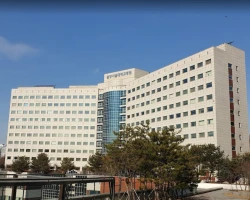
Seoul, South Korea
Specializations: Cardiac surgery, Vascular surgery, Thoracic surgery, Neurosurgery, Spine surgery, Orthopedic surgery, Oncology
Languages: Arabic, English, Russian
Starting with Jejungwon, Korea's first national hospital in 1885, it has opened a new horizon for advanced medicine in Korea, a barren land of
read more
5
from Sakis K
November 10, 2023
Great experience. Went there on a Sunday evening urgently for our kid. The paediatrician on site suggested that a specialist should see her. They called him and he was there just for us in less than an hour.
1
from Adrian Müller
November 05, 2023
Exorbitant prices were charged for a single D-DIMER blood test. We were charged 120 euros for this test, whereas at a private microbiological practice in the heart of Thessaloniki, without any insurance, the cost was only 10 euros. If you need to undergo basic blood tests, it's advisable not to choose this facility, unless you have private insurance. Furthermore, the staff responsible for blood sampling seemed to lack experience, and they appeared quite inconvenienced when I requested the use of a smaller needle.
5
from Athina Rafaela
September 17, 2023
Truly grateful to this hospital, my mother has been receiving treatment there for the past year and a half. The oncology department as well as the department dealing with international patients have truly showed exemplary service. The doctors that have helped us have been beyond amazing and I would not have chosen any other hospital. The nurses have also been helpful, joyful and kind. We now do all our medical services there, and travel cross country to get there, including myself and other family members.
Prices for popular procedures:
-
Liver transplantation
by request
-
Hemicolectomy
≈ $12,962
-
Radiofrequency ablation (RFA) for liver cancer
≈ $4,812
-
Rectum anterior resection
≈ $10,154
-
Radical prostatectomy
≈ $10,536
-
Transurethral resection of the prostate (TURP)
≈ $5,256
-
Conization
≈ $2,131
-
Open hysterectomy
≈ $4,345
-
Radical nephrectomy
≈ $12,304
3.2
5 reviews
5
from Sakis K
November 10, 2023
Great experience. Went there on a Sunday evening urgently for our kid. The paediatrician on site suggested that a specialist should see her. They called him and he was there just for us in less than an hour.
1
from Adrian Müller
November 05, 2023
Exorbitant prices were charged for a single D-DIMER blood test. We were charged 120 euros for this test, whereas at a private microbiological practice in the heart of Thessaloniki, without any insurance, the cost was only 10 euros. If you need to undergo basic blood tests, it's advisable not to choose this facility, unless you have private insurance. Furthermore, the staff responsible for blood sampling seemed to lack experience, and they appeared quite inconvenienced when I requested the use of a smaller needle.
5
from Athina Rafaela
September 17, 2023
Truly grateful to this hospital, my mother has been receiving treatment there for the past year and a half. The oncology department as well as the department dealing with international patients have truly showed exemplary service. The doctors that have helped us have been beyond amazing and I would not have chosen any other hospital. The nurses have also been helpful, joyful and kind. We now do all our medical services there, and travel cross country to get there, including myself and other family members.

Thessaloníki, Greece
Specializations: Cardiac surgery, Vascular surgery, Thoracic surgery, Neurosurgery, Spine surgery, Orthopedic surgery, Oncology
Languages: English
The Inter-Balkan Medical Center of Thessaloniki is the largest and most modern private hospital in SE Europe. It was founded in 2000 and operates in
read more
5
from Ira Sack
May 21, 2023
Probably the worst hospital I have ever been in! The nursing staff generally is rude and extremely unhelpful! DO NOT COME HERÈ....GOTO ANY OTHERHOSPITALlyou can...dirty and disgusting
1
from Joel Meentzen
October 30, 2022
Disgusting place. Five days at the maternity ward, room was not cleaned once. We cleaned the bed from blood and dirt. I'd call that a scandal!
1
from hayley russell
January 29, 2022
I would not recommend to seek medical treatment at the Galilee Medical Centre in Nahariya. It is old, dirty and the Russian doctors & nurses are unkind & cruel.
My daughter was in the covid unit so we could not visit with her, she was very poorly and was left in tears and begging for pain relief on many occasions.
She was under the care of an ENT specialist who said she needed to stay in hospital until she could swallow food and drink but some of the doctors kept telling her that she shouldn’t be there and needed to go home. Thank God I could get through to the department by telephone and would be persistently calling for the staff to attend to my daughter. The area where my daughter was put only had 2 other patients, so it was not busy. The ENT specialist advised that she drink very cold water or suck ice and to eat very soft cold food like ice-cream or yogurt, she was not given anything. They took another covid test which came up positive but because it had been 5 days since her first test they discharged her from the covid unit and transferred her to the internal medicine ward for observation. The ward was very small with 4 old beds, broken equipment and the toilets were dirty with no toilet rolls, but the doctors were friendly and helpful, even though my daughter was never given the food that she asked for. The other patients in her ward had relatives staying all night so it was noisy and my daughter could get no rest with all the loud talking and videos being played out on their phones throughout the night. She had been on intravenous fluids and the doctors left the needle in her arm which caused severe bruising and was very painful. The release procedure was relatively short and we were thankful to get her home and never to return there again!
Prices for popular procedures:
-
Liver transplantation
by request
-
Hemicolectomy
≈ $23,936
-
Rectum anterior resection
≈ $28,115
-
Radical prostatectomy
≈ $18,618
-
Transurethral resection of the prostate (TURP)
≈ $17,028
-
Conization
≈ $10,023
-
Open hysterectomy
≈ $23,212
-
Radical nephrectomy
≈ $38,339
-
Loop electrosurgical excision procedure (LEEP)
≈ $4,272
3.3
5 reviews
5
from Ira Sack
May 21, 2023
Probably the worst hospital I have ever been in! The nursing staff generally is rude and extremely unhelpful! DO NOT COME HERÈ....GOTO ANY OTHERHOSPITALlyou can...dirty and disgusting
1
from Joel Meentzen
October 30, 2022
Disgusting place. Five days at the maternity ward, room was not cleaned once. We cleaned the bed from blood and dirt. I'd call that a scandal!
1
from hayley russell
January 29, 2022
I would not recommend to seek medical treatment at the Galilee Medical Centre in Nahariya. It is old, dirty and the Russian doctors & nurses are unkind & cruel.
My daughter was in the covid unit so we could not visit with her, she was very poorly and was left in tears and begging for pain relief on many occasions.
She was under the care of an ENT specialist who said she needed to stay in hospital until she could swallow food and drink but some of the doctors kept telling her that she shouldn’t be there and needed to go home. Thank God I could get through to the department by telephone and would be persistently calling for the staff to attend to my daughter. The area where my daughter was put only had 2 other patients, so it was not busy. The ENT specialist advised that she drink very cold water or suck ice and to eat very soft cold food like ice-cream or yogurt, she was not given anything. They took another covid test which came up positive but because it had been 5 days since her first test they discharged her from the covid unit and transferred her to the internal medicine ward for observation. The ward was very small with 4 old beds, broken equipment and the toilets were dirty with no toilet rolls, but the doctors were friendly and helpful, even though my daughter was never given the food that she asked for. The other patients in her ward had relatives staying all night so it was noisy and my daughter could get no rest with all the loud talking and videos being played out on their phones throughout the night. She had been on intravenous fluids and the doctors left the needle in her arm which caused severe bruising and was very painful. The release procedure was relatively short and we were thankful to get her home and never to return there again!
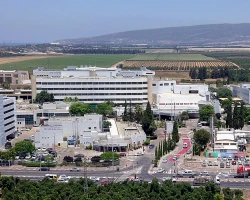
Nahariyya, Israel
Specializations: Cardiac surgery, Vascular surgery, Thoracic surgery, Neurosurgery, Spine surgery, Orthopedic surgery, Oncology
Galilee Medical Center (Hebrew: המרכז הרפואי לגליל, HaMerkaz HaRefu'i LaGalil), abbreviated GMC, is a hospital located in the coastal city of Nahariya and is the
read more
Clinics grouping by rating
Clinic with the highest rating of 4.8 — Liv Bona Dea Hospital in Baku, Azerbaijan and 2 more, clinic with the most reviews number of 35757 — Aster CMI hospital in Bengaluru, India.
With rating 4.0 and over — 56 clinics .
Countries with the highest number of clinics treating the diseases:
Cholestatic liver disease:
worldwide
153 clinics
Germany
14 clinics
Mexico
11 clinics
South Korea
10 clinics
Turkey
10 clinics
United States
9 clinics
Related procedures:
Procedures are likely to be used for Cholestatic liver disease treatment:
Liver transplantation
.
Quick navigation
Procedures
Diseases
- Cholecystectomy $105 - $39,015
- Distal gastric resection $690 - $25,307
- Duodenectomy $553 - $17,712
- Esophagogastrectomy $874 - $199,170
- Extended cholecystectomy $2,234 - $75,083
- Gastric endoscopic submucosal dissection (ESD) $287 - $11,105
- Jejunostomy $352 - $22,812
- Laparoscopic cholecystectomy $81 - $60,580
- Laproscopic total gastrectomy $592 - $49,806
- Major liver resection $705 - $92,913
- Minimally invasive video-assisted thyroidectomy (MIVAT) $478 - $12,827
- Minor liver resection $90 - $45,376
- Non-anatomic liver resection (NAR) $649 - $88,207
- Parathyroidectomy $391 - $18,587
- Proximal gastric resection $697 - $51,609
- Small bowel resection $119 - $189,150
- Subtotal gastrectomy $732 - $41,728
- Total esophagectomy $782 - $149,780
- Total gastrectomy $941 - $87,138
- Transoral endoscopic thyroidectomy via vestibular approach (TOETVA) $559 - $9,785
- Benign bone tumor
- Bone cancer
- Chronic pain
- Eye cancer
- Eye melanoma
- Head and neck cancer
- Hip osteoarthritis
- Jaw tumor
- Knee osteoarthritis
- Lacrimal sac tumor
- Lip cancer
- Mandibular cancer
- Maxillary cancer
- Oral cancer
- Parotid tumor
- Pharyngeal cancer
- Rheumatoid arthritis
- Salivary gland tumor
- Spinal cancer
- Submandibular sialadenitis
